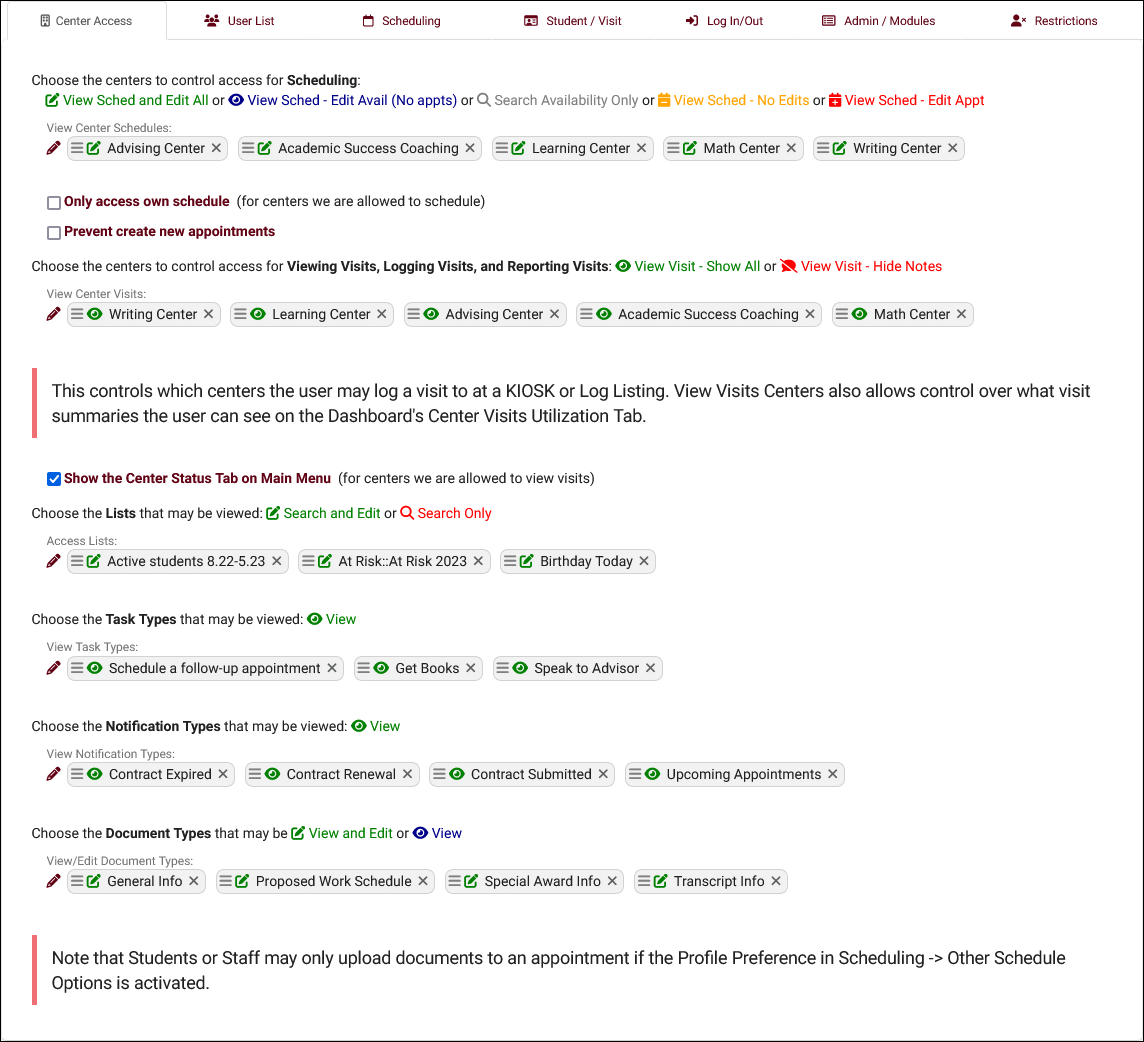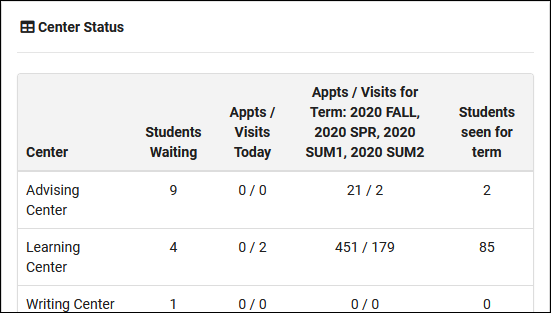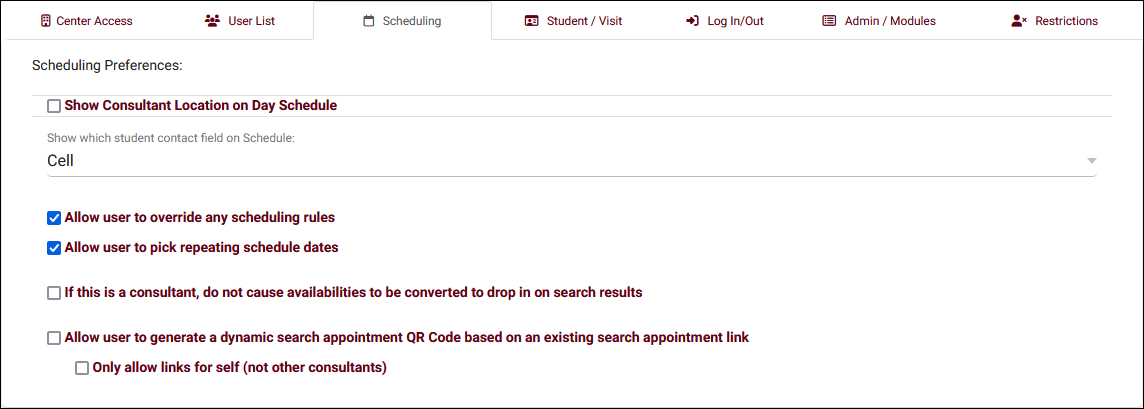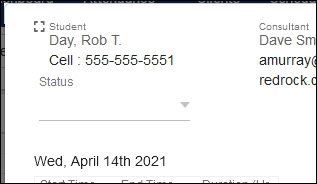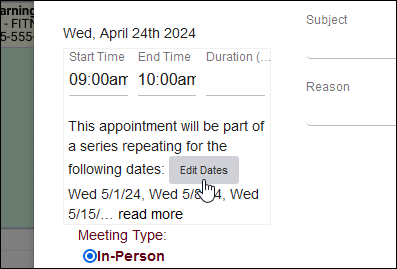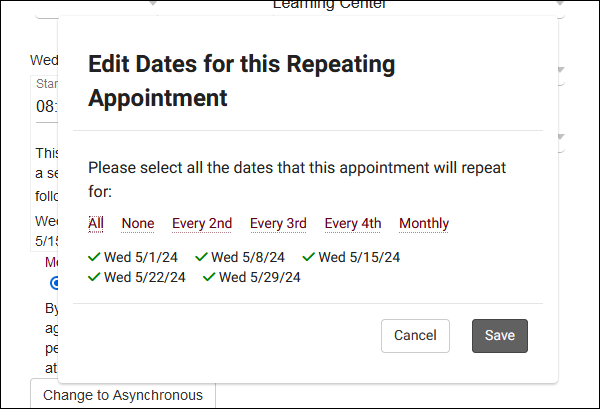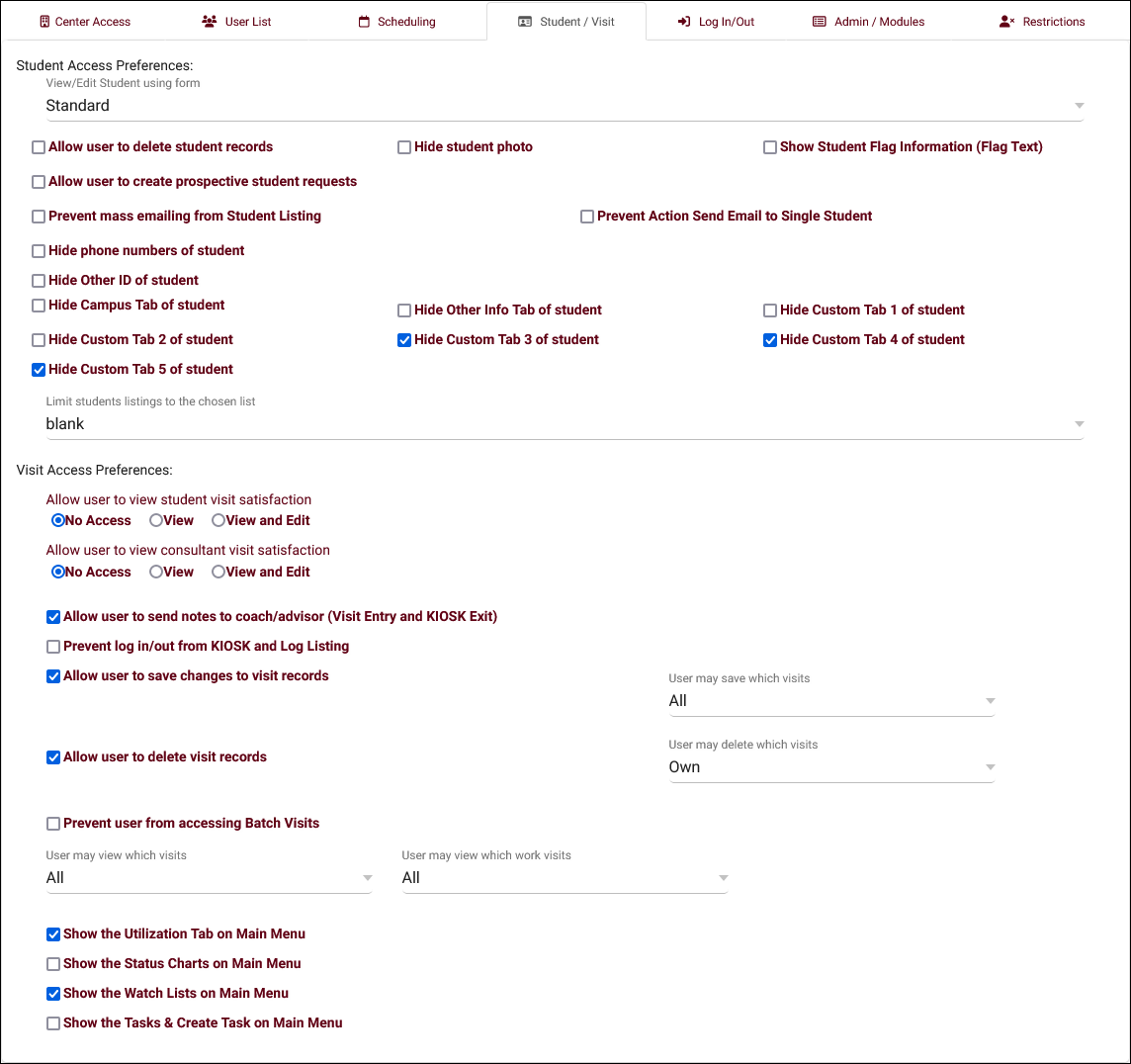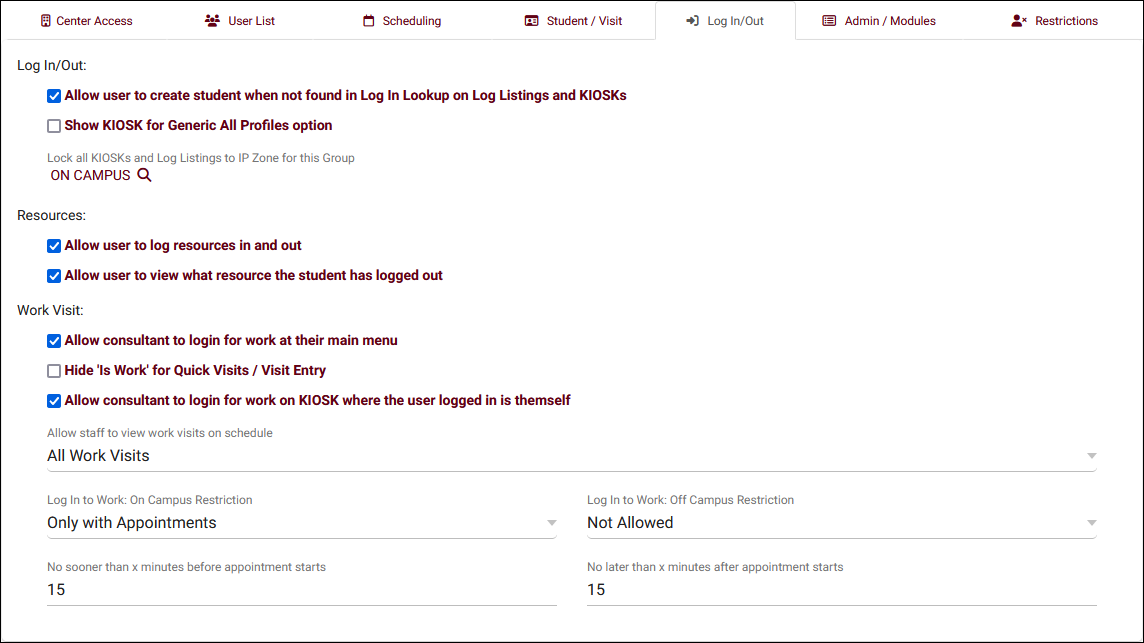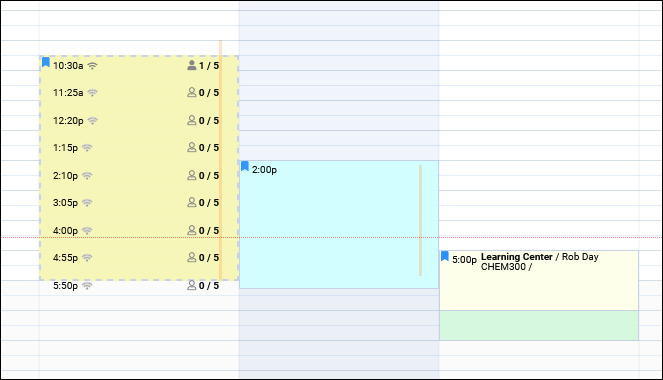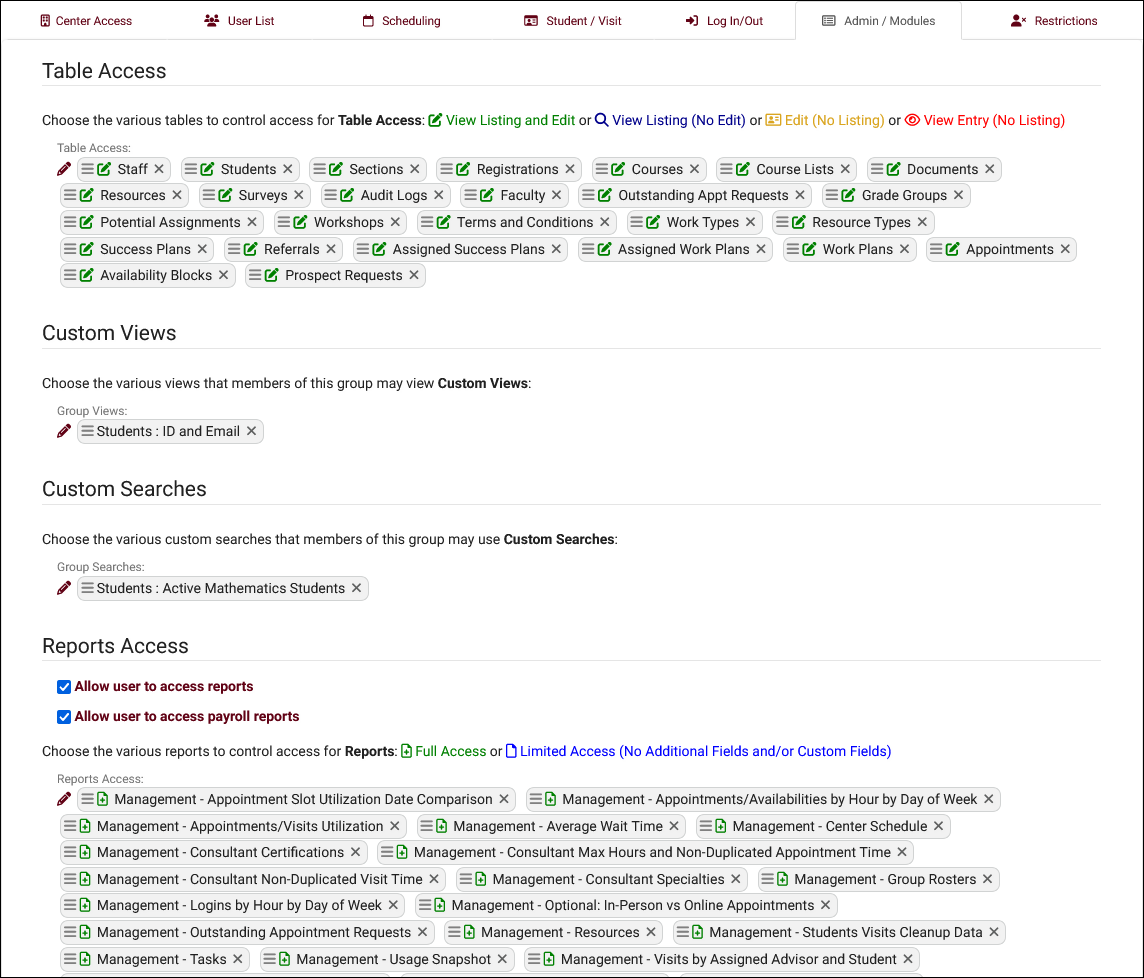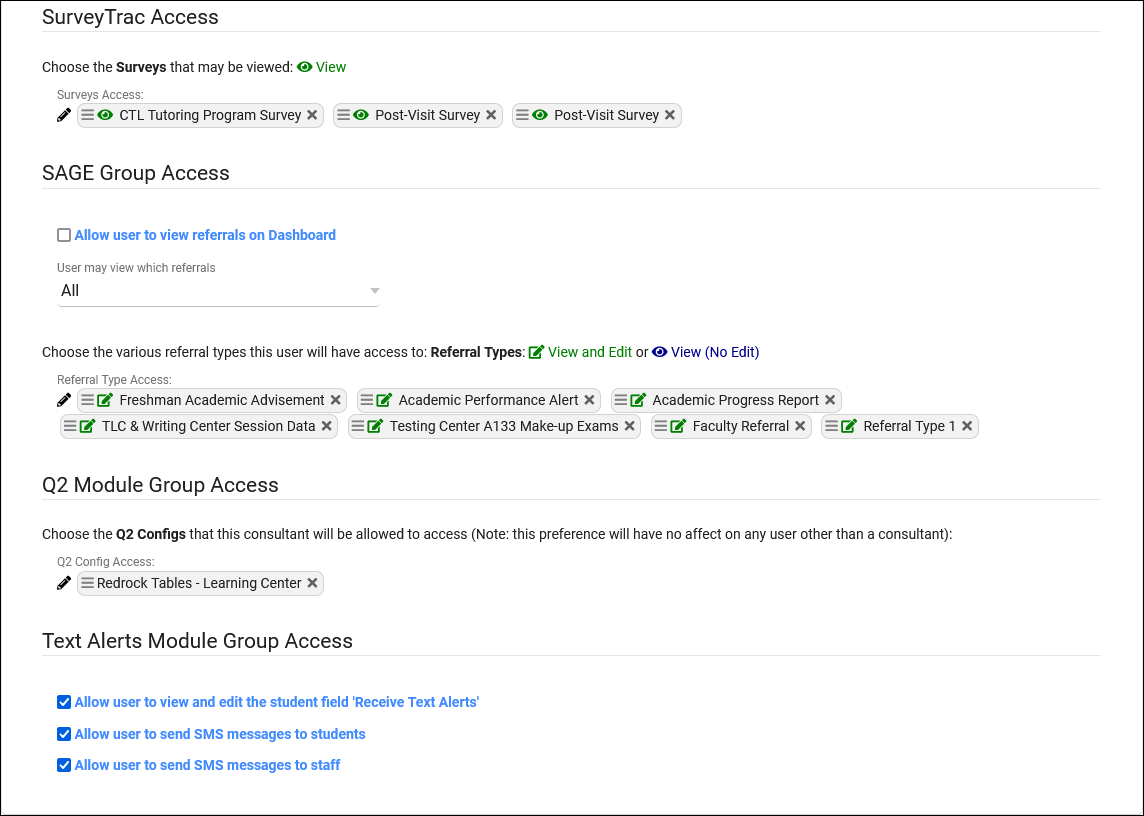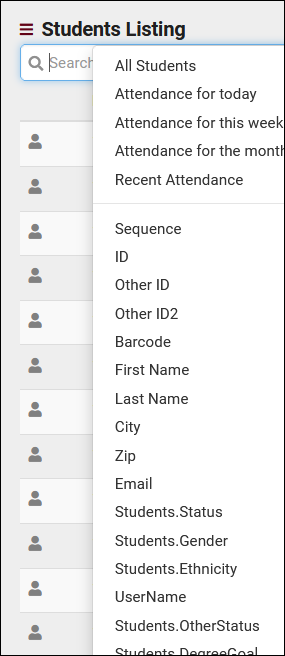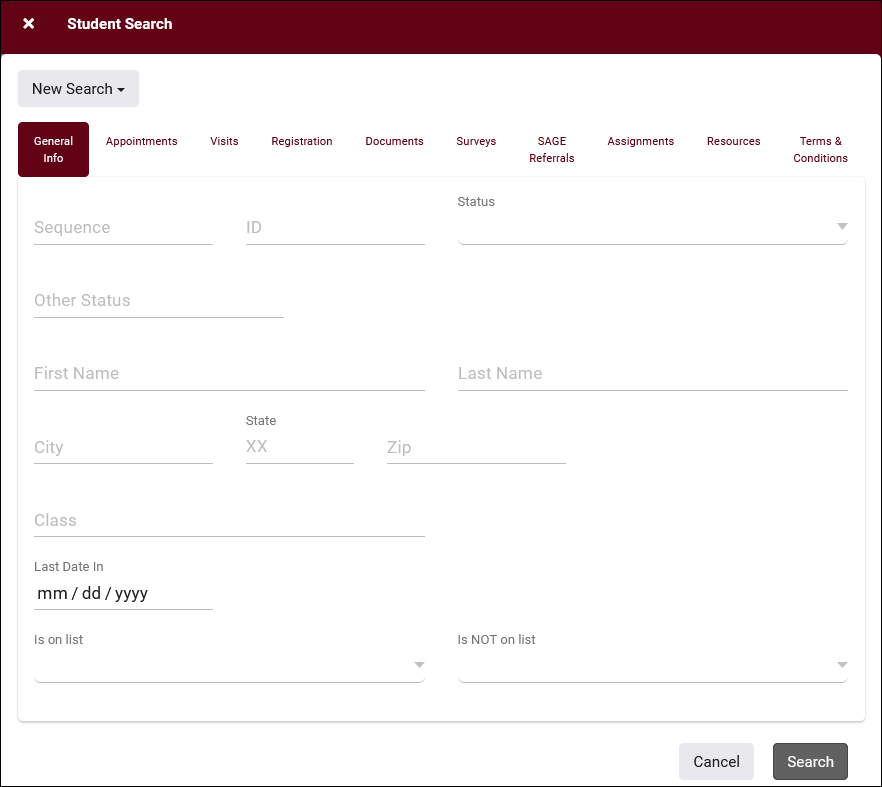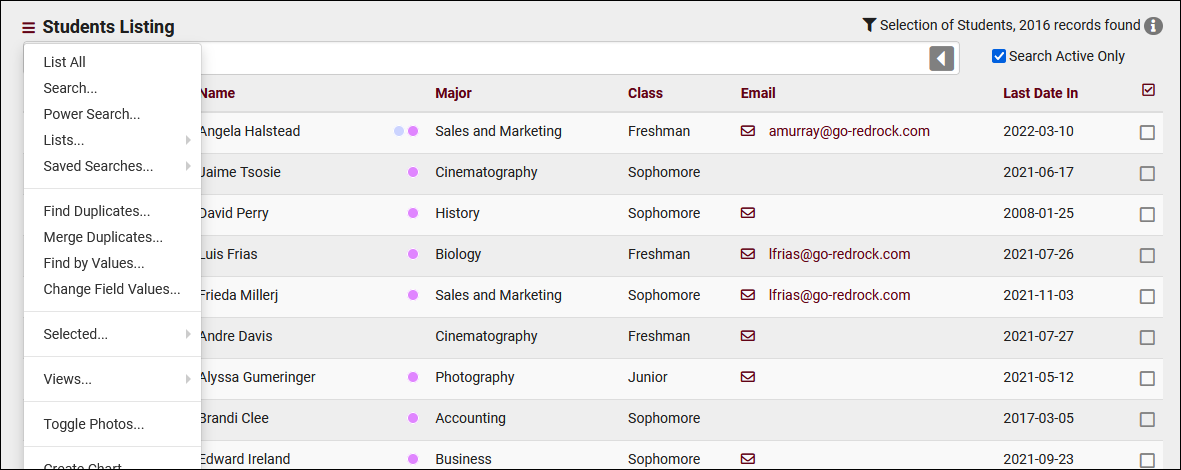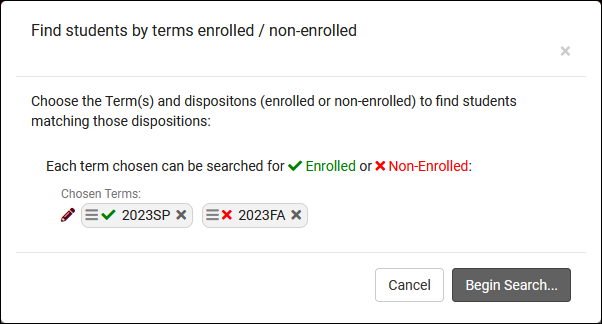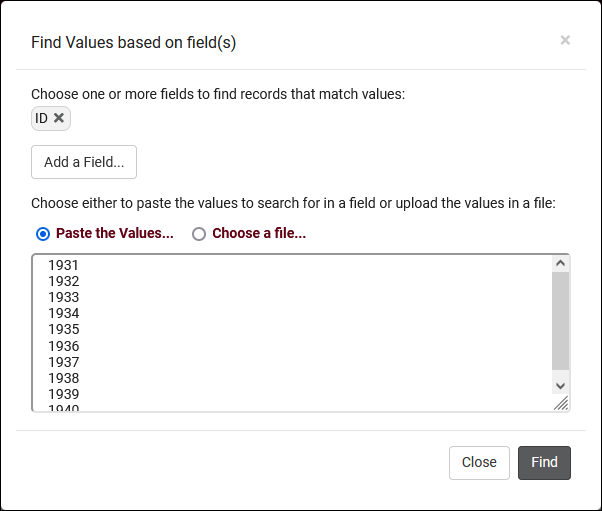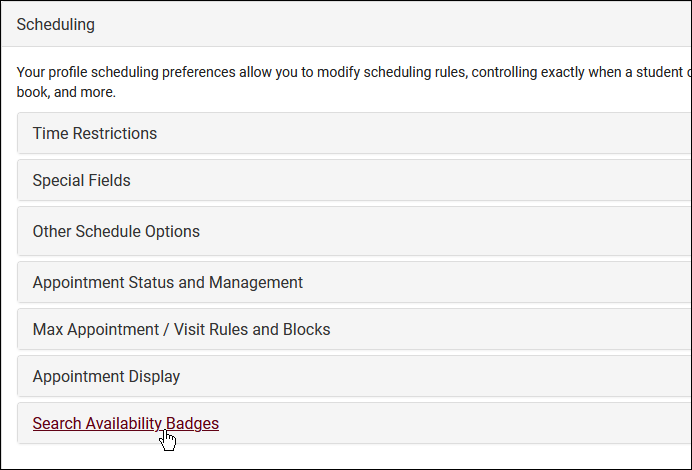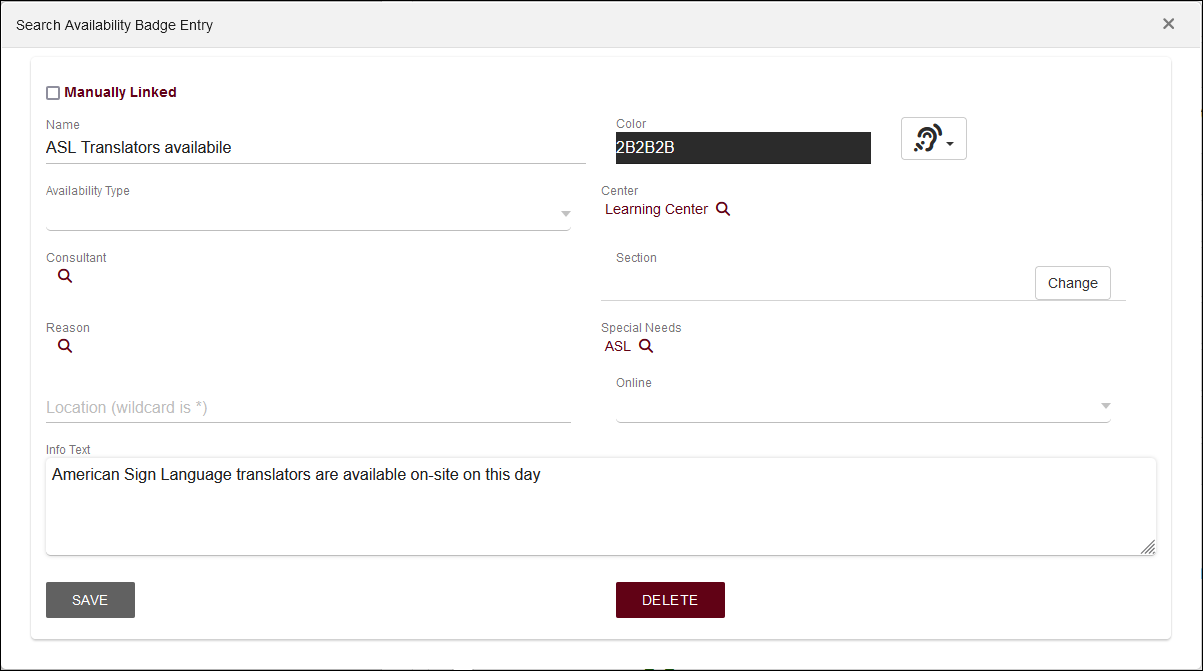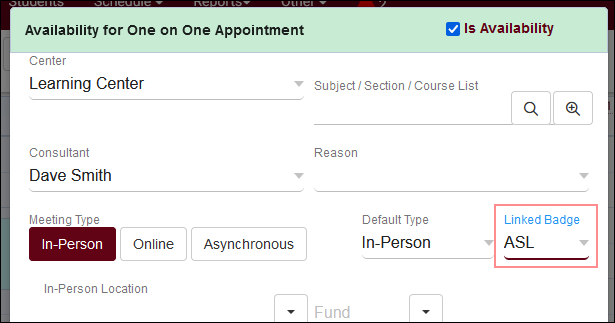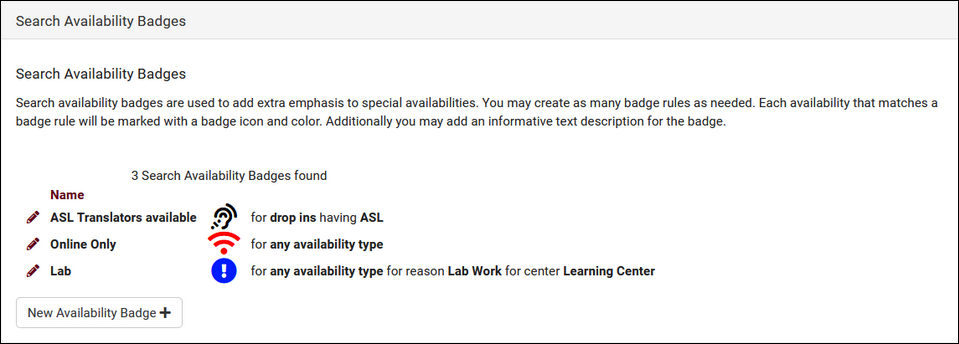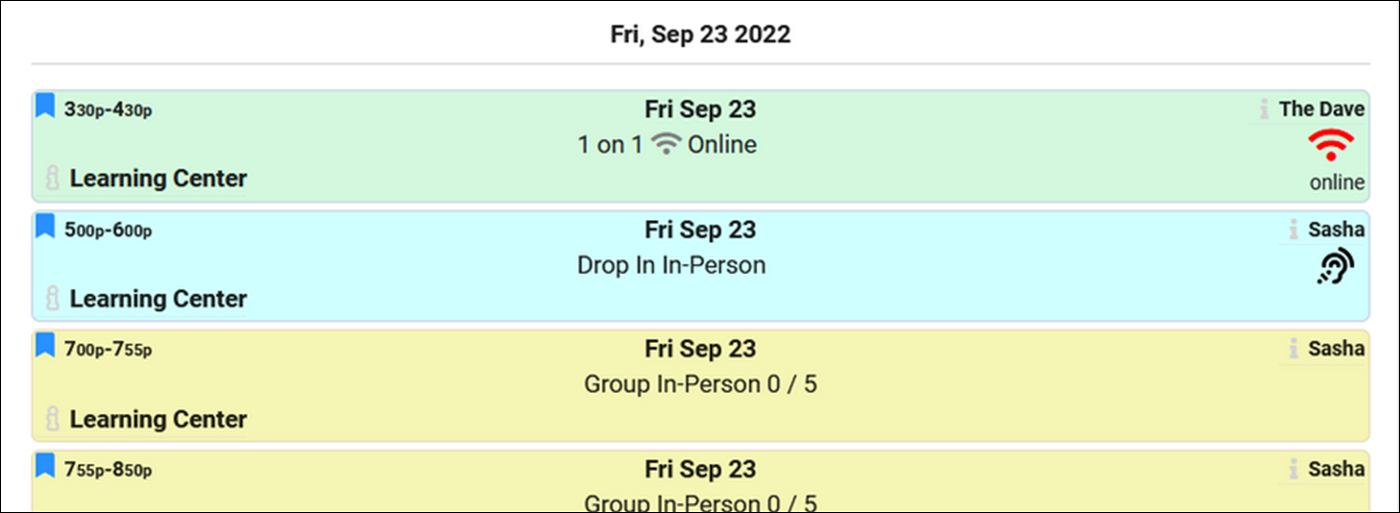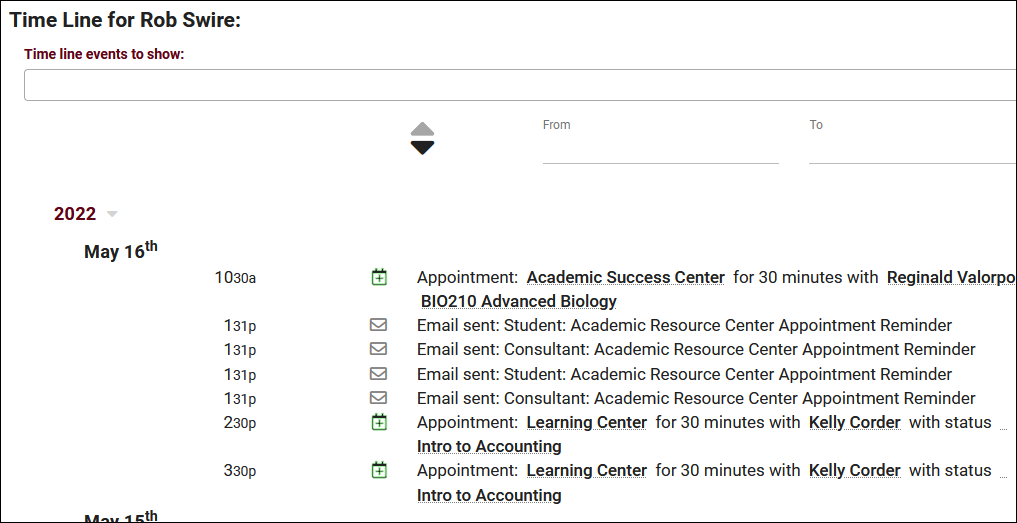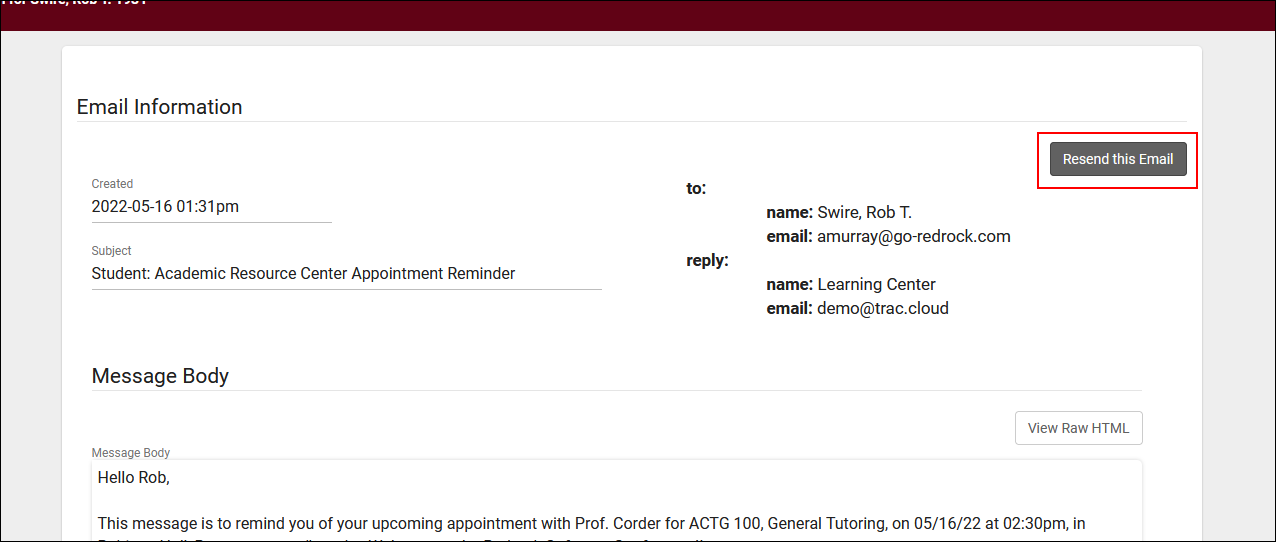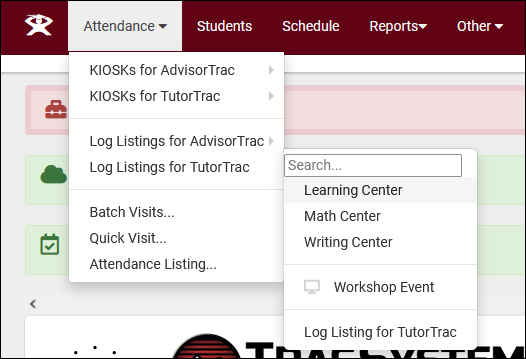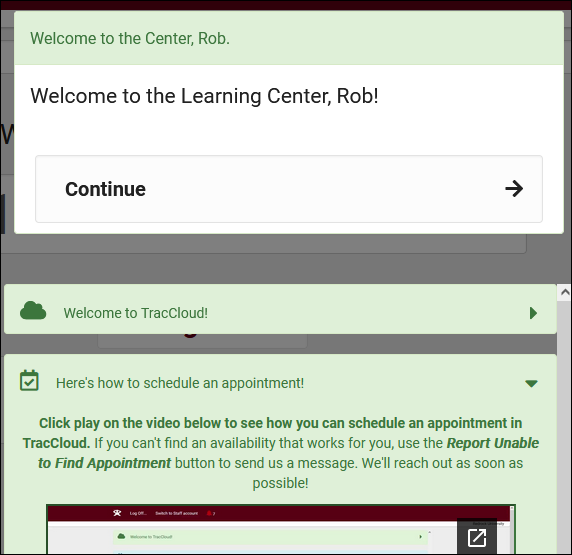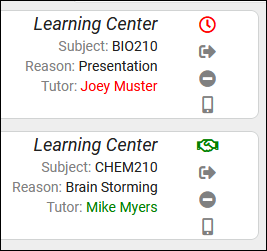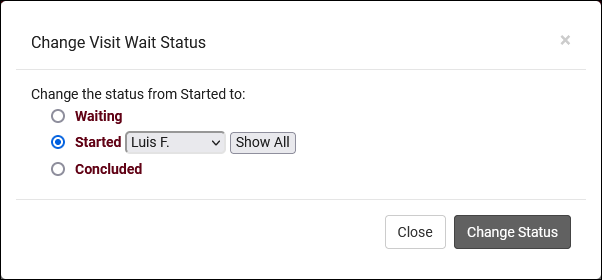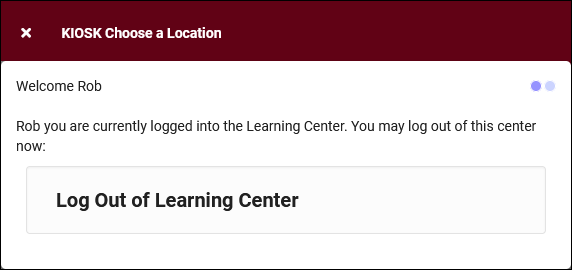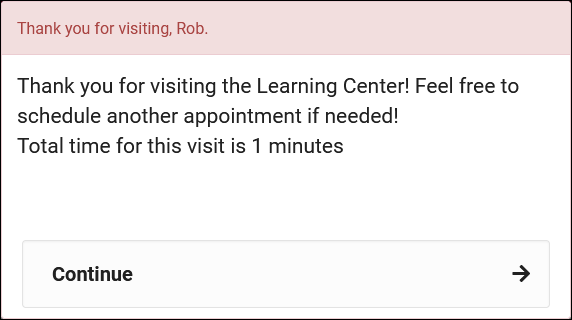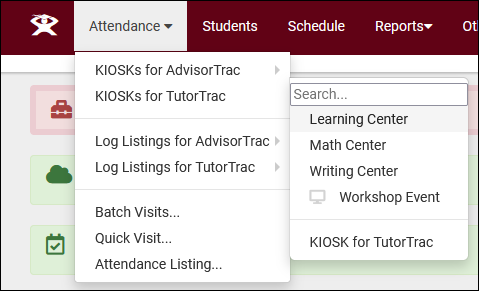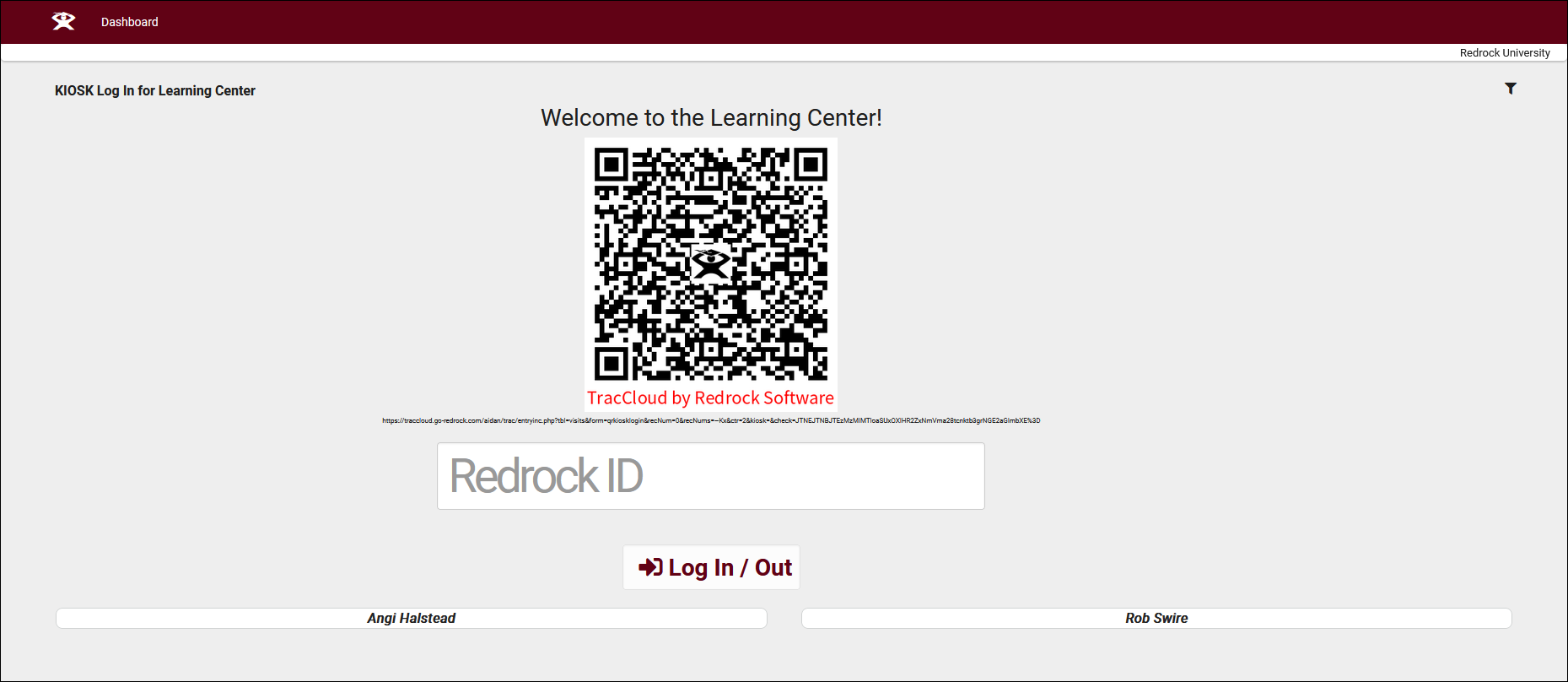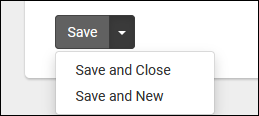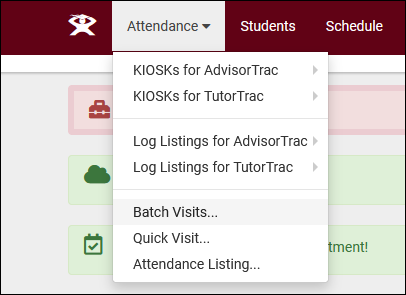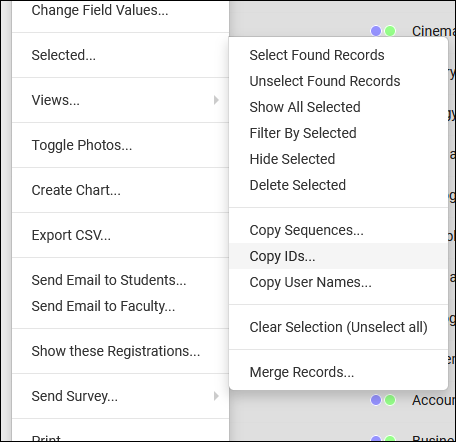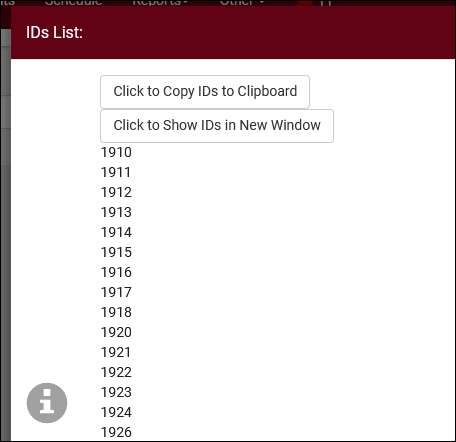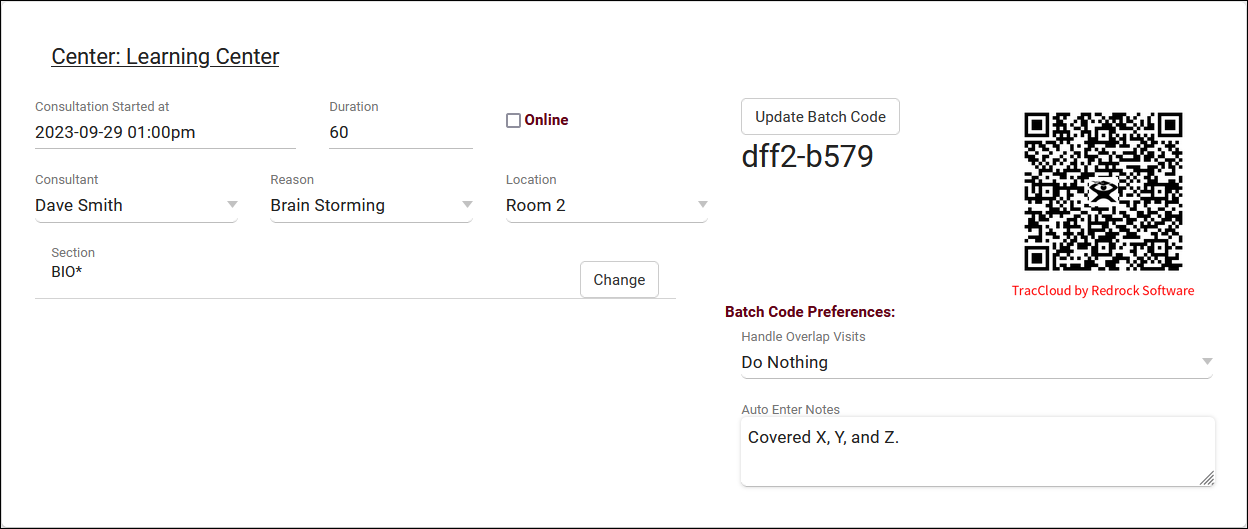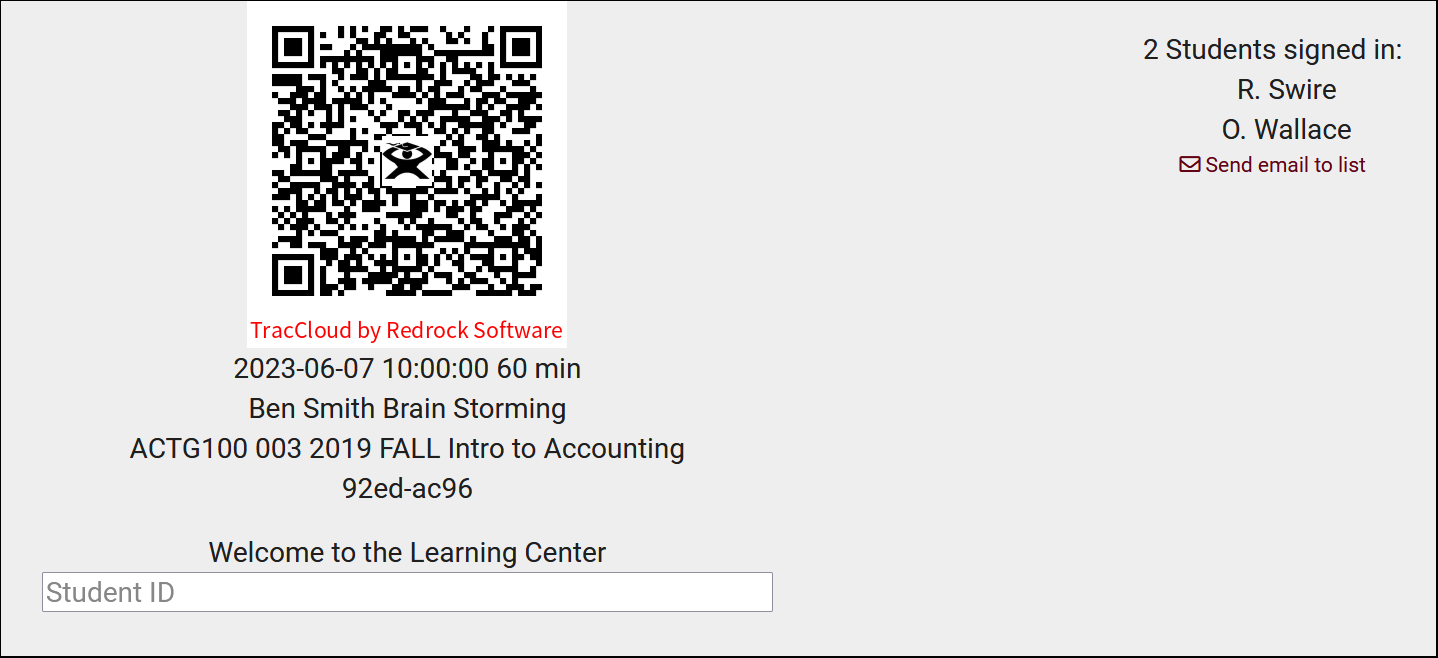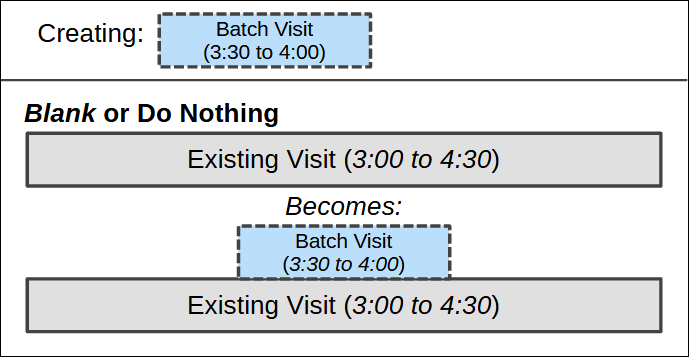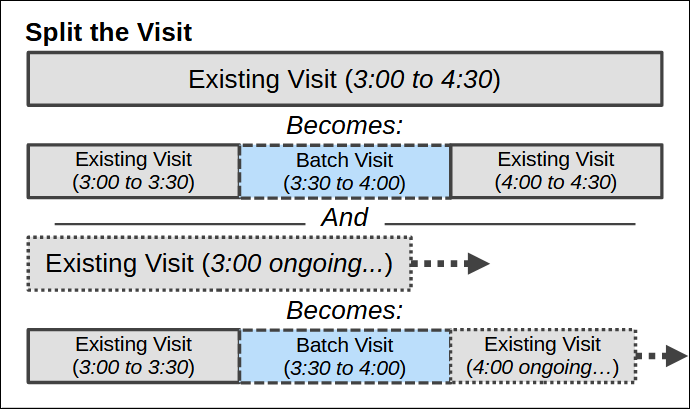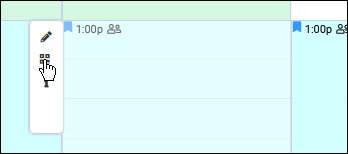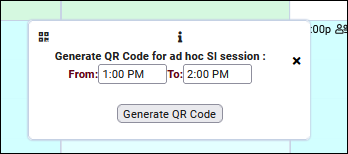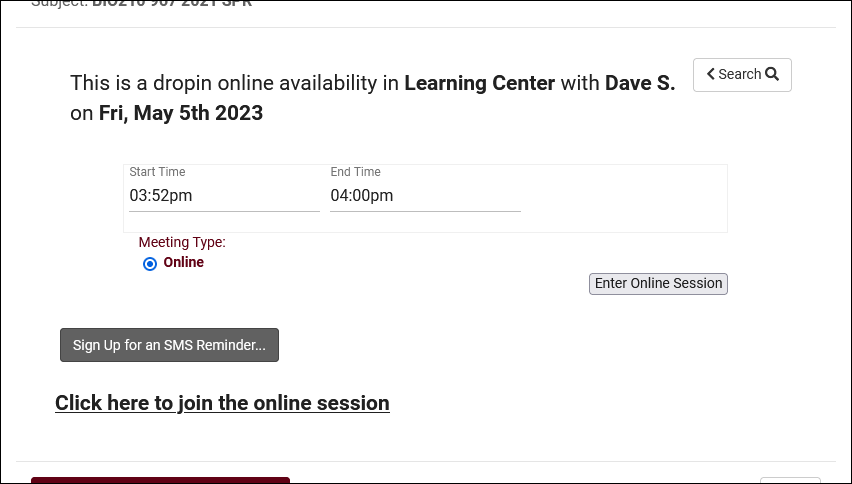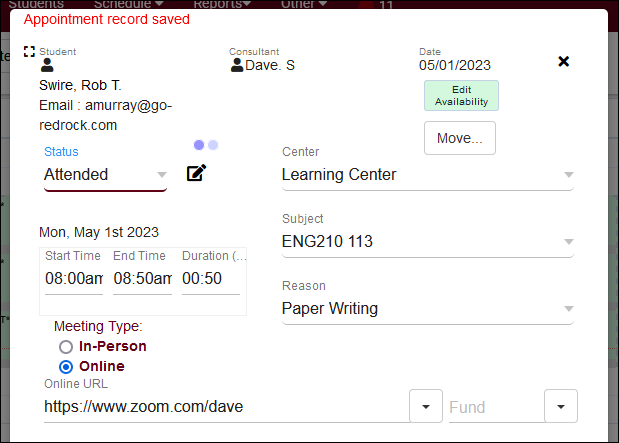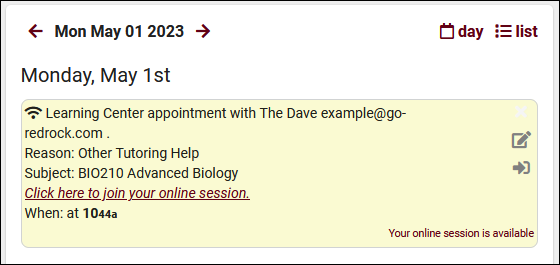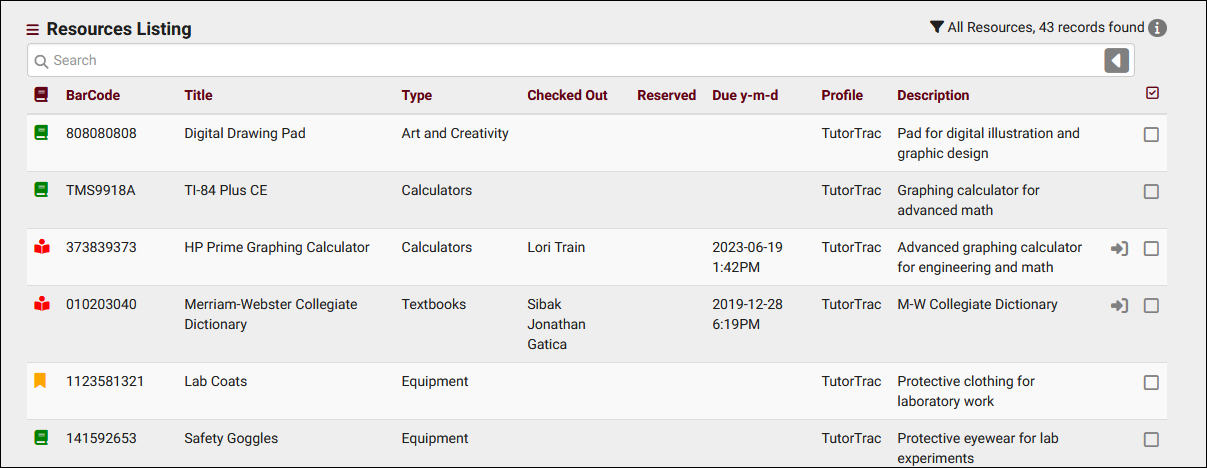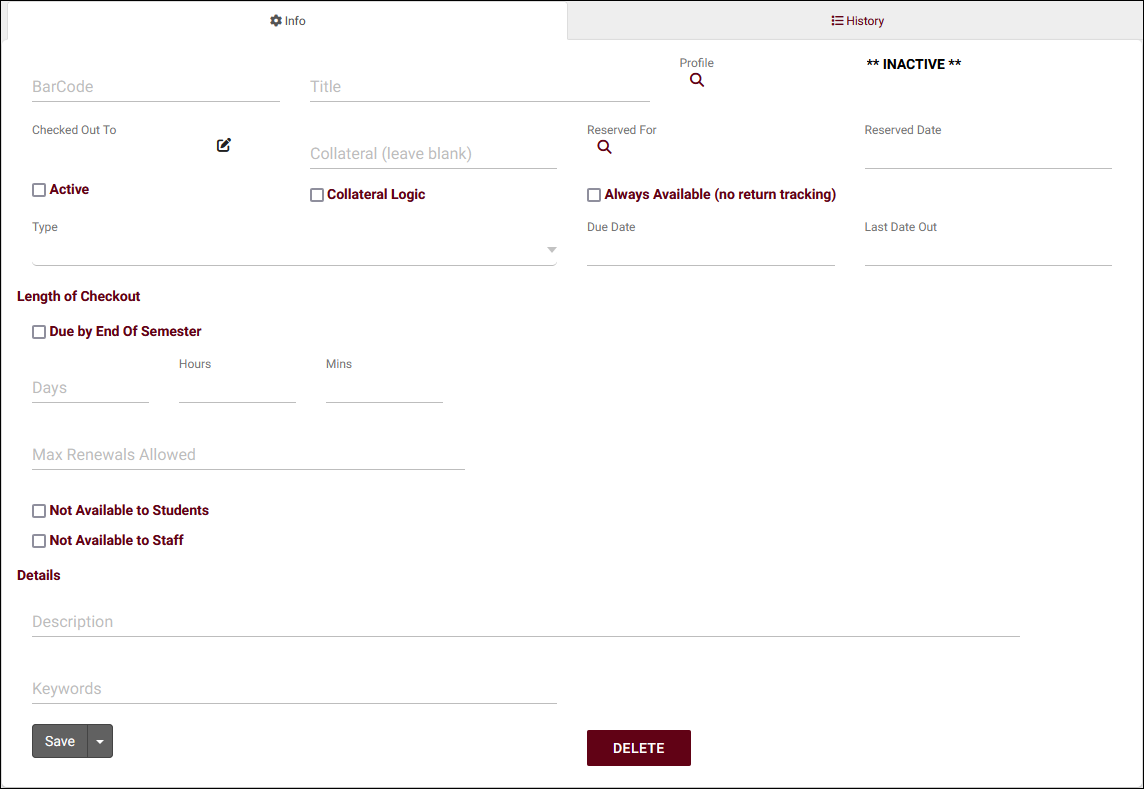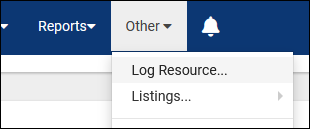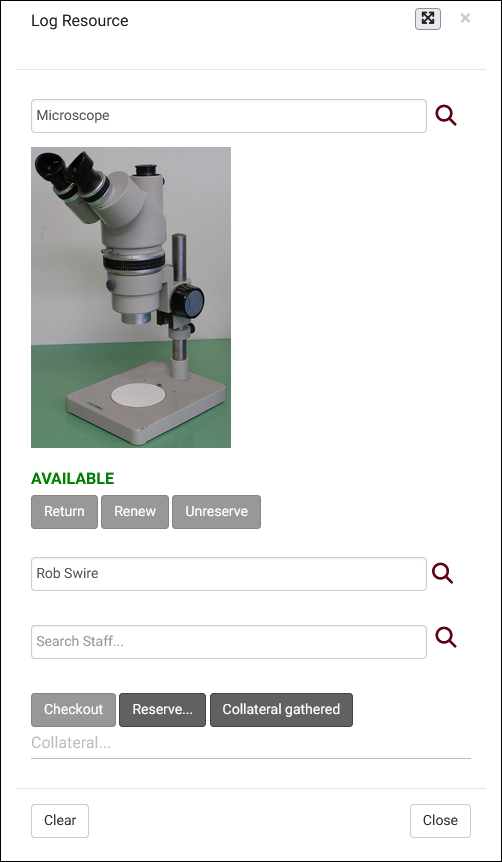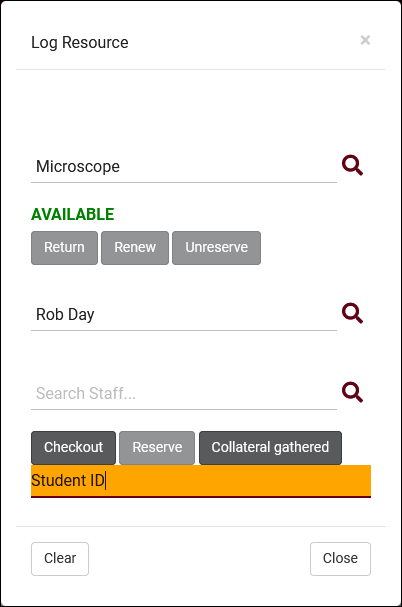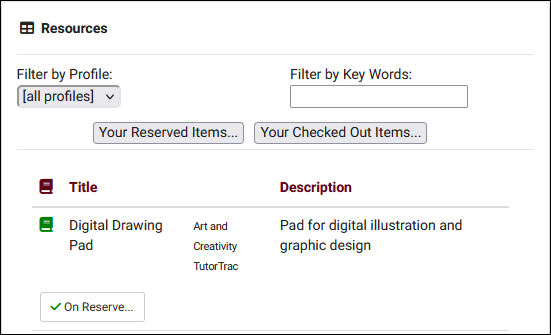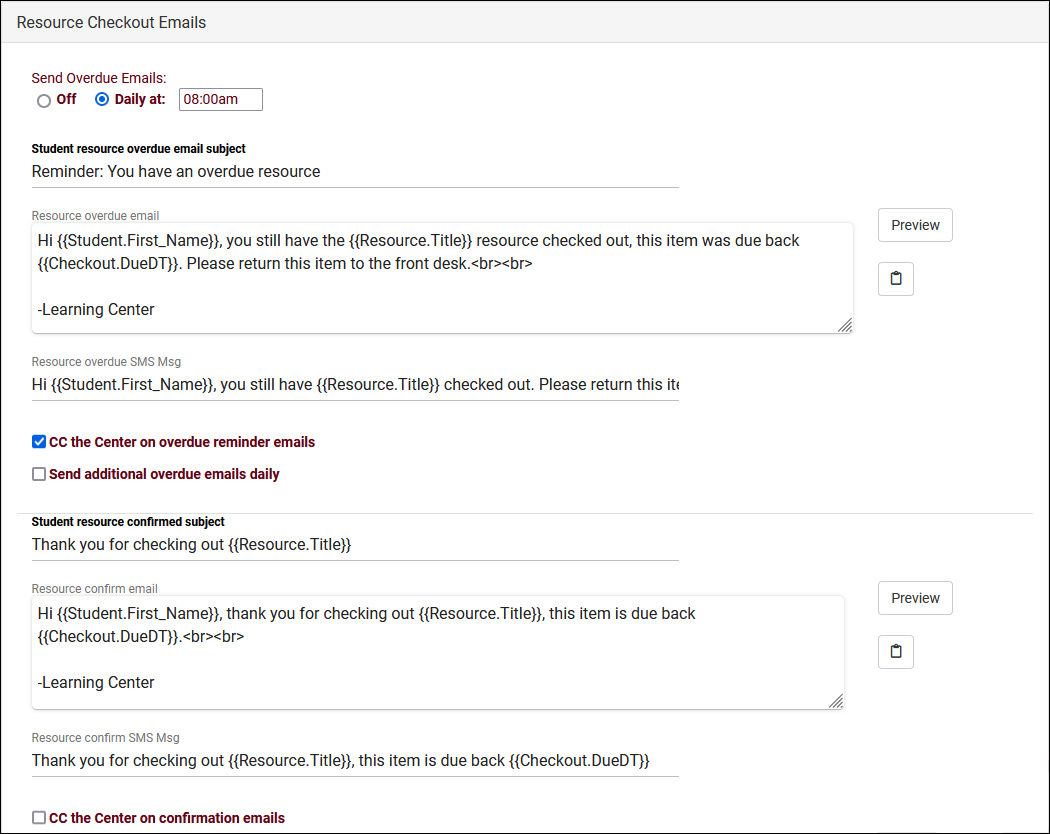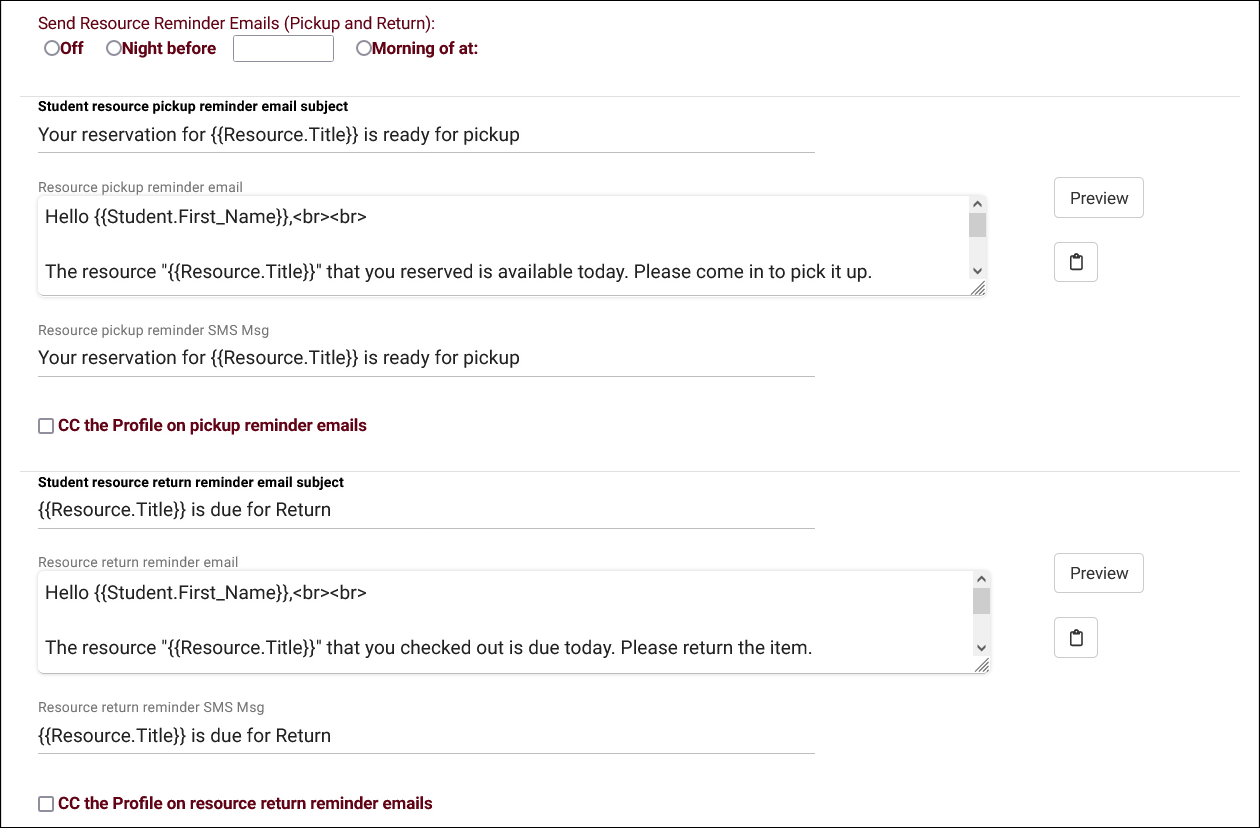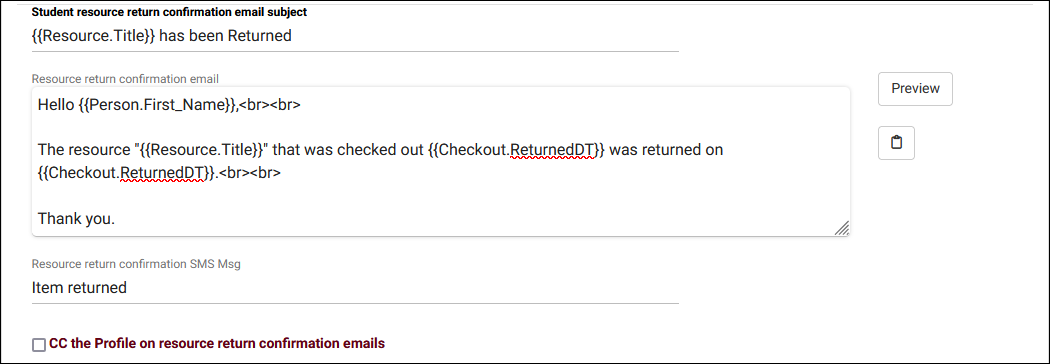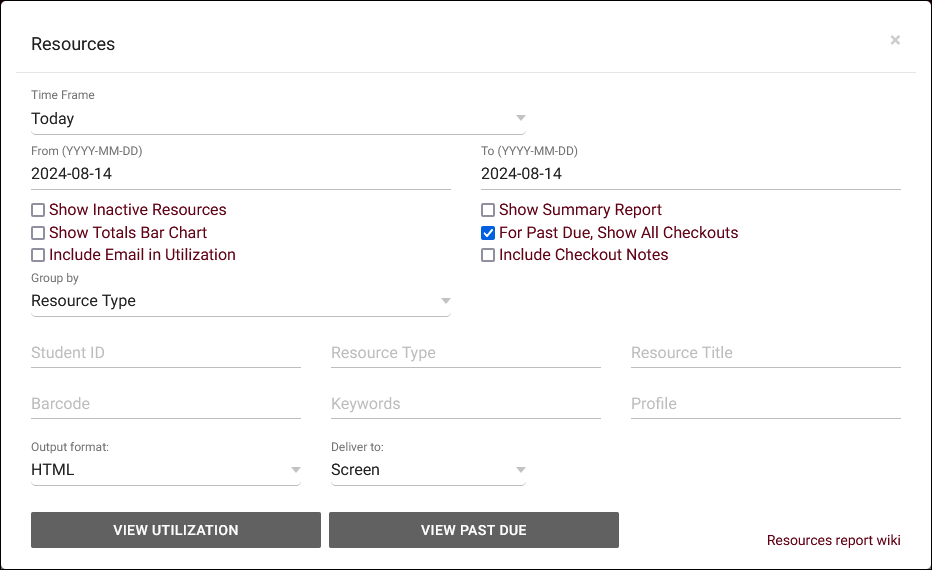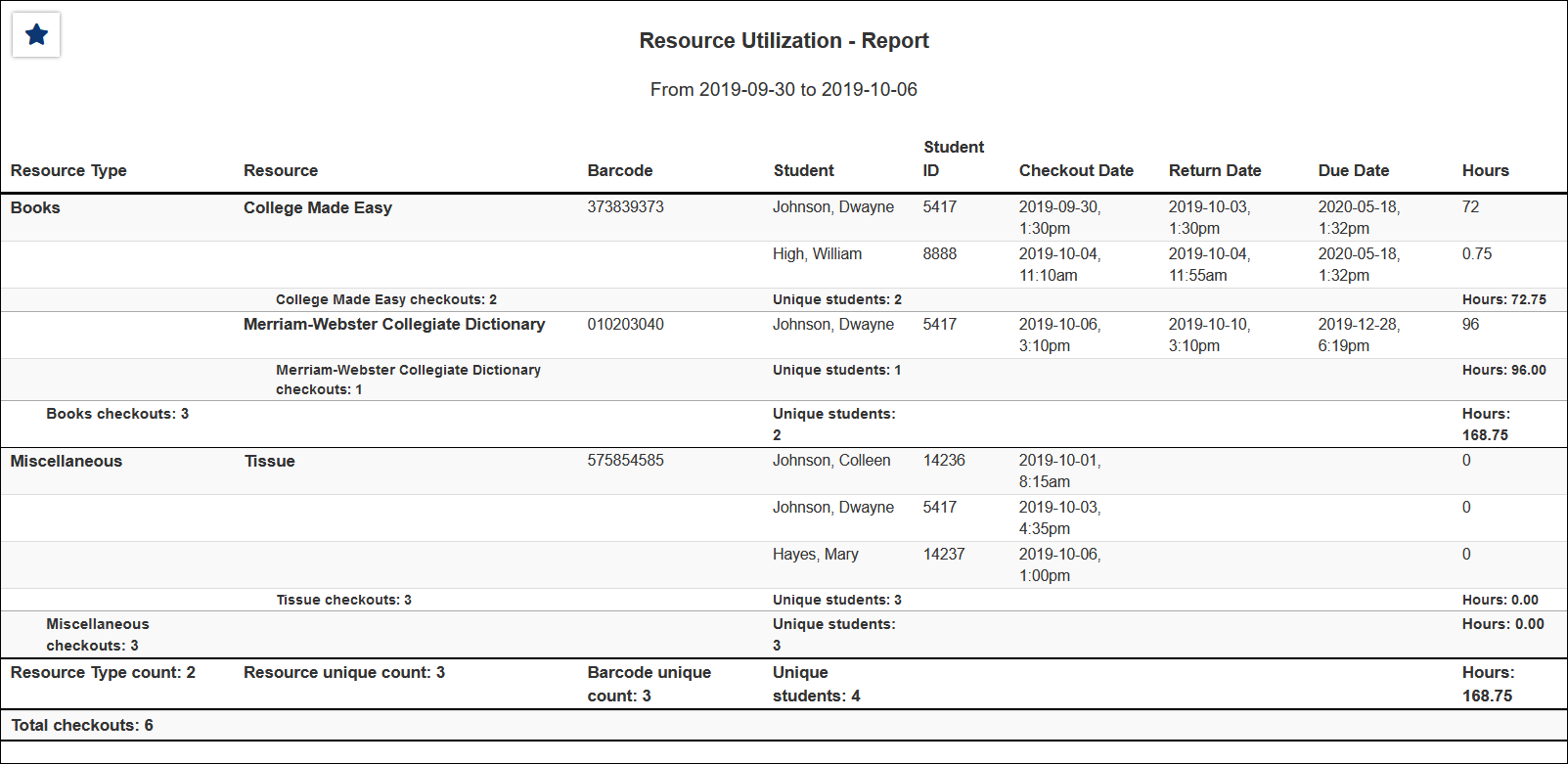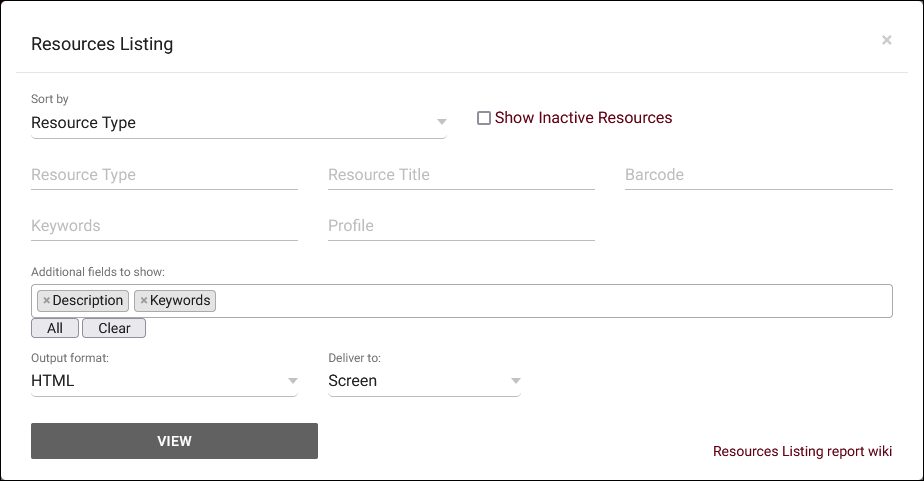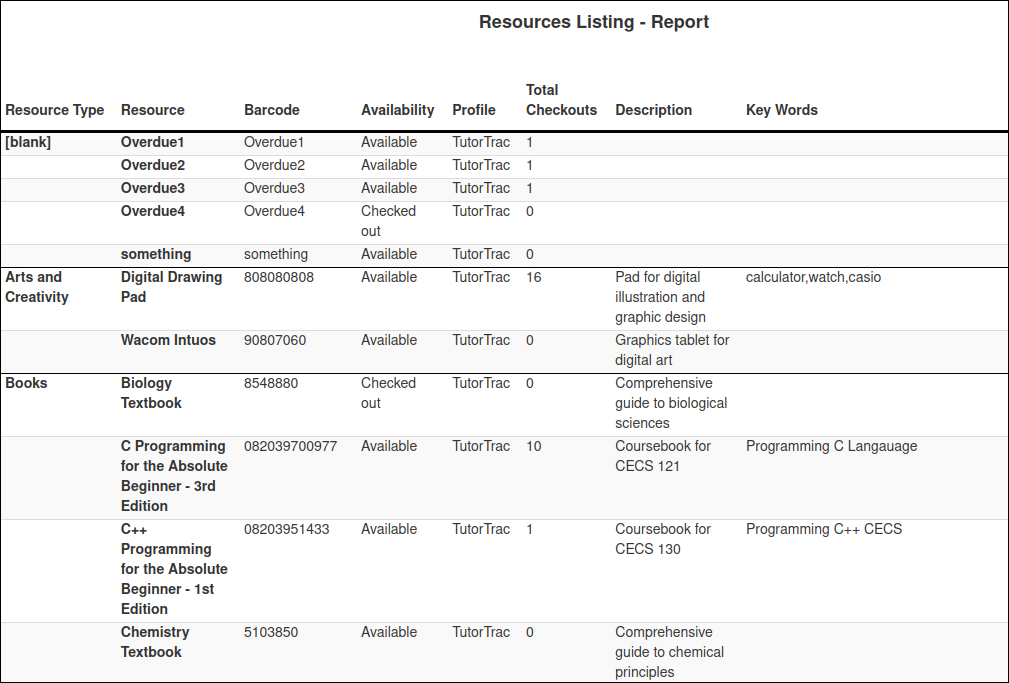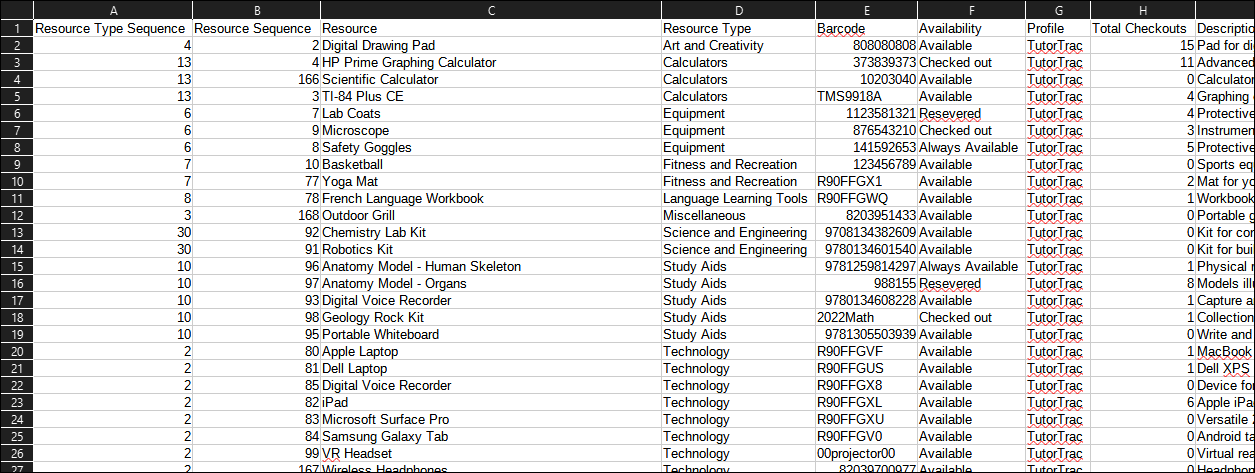TracCloudWhatsNew
From Redrock Wiki
This page highlights some of the recent changes made to the TracCloud platform, and how you can utilize them on your own instance. A list of past changes and a full changelog can be found in the tabs above.
If you have any questions about these changes, feel free to reach out to us on our helpdesk.
Profile Preferences
Prefs
Permission groups determine what kind of access your staff have to various elements of TracCloud. Each group represents a set of permissions. Do you want this group to access the schedule? Which centers? Can they create students? Can they manage resources? These options and many more are available to modify in your permission groups.
From a profile perspective, this tab displays the groups assigned to the profile, allowing you to manage your staff permissions to ensure they only have the information they need, and nothing more. Groups can also be managed from their own dedicated list by going to Other > Other Options > Groups.
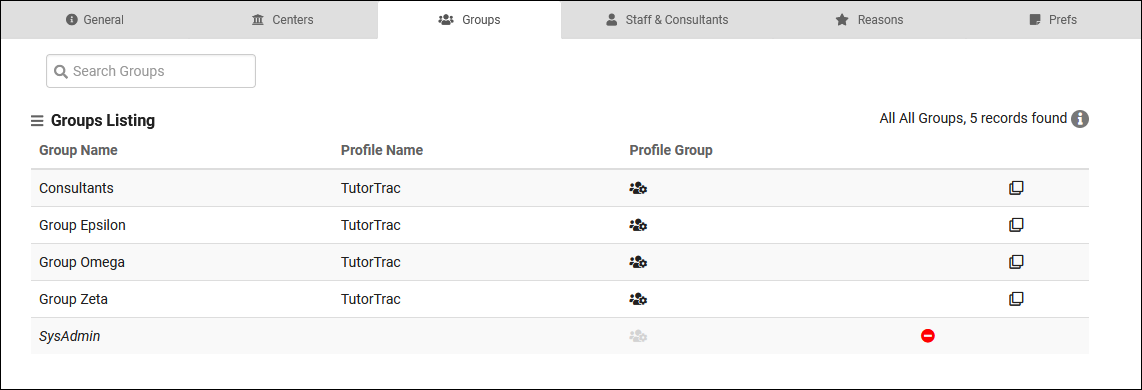
We can create a new, or add an existing permission group to the profile by clicking the hamburger icon. New group will prompt us to choose a name and which profile it’s assigned to. After saving, you will be brought to the settings menu where we can configure the permissions of this group.
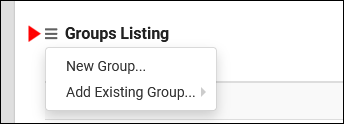
Within each permission group, you will find multiple tabs to categorize different types of preferences. Details on each of these tabs and the preferences within can be found below.
- Color/Icon Code
- Some of these options have multiple permissions based on the icon selected for each field. Click on the icon to cycle through the available options. The key for what each icon represents is within the preference name. For example, “Scheduling: View Sched and Edit All or View Sched…” in the screenshot below.

- Scheduling
- These are the center schedules that staff assigned to this group can view/manage.
| View Staff Schedule | Edit Appts on Staff Schedule | Edit Avails on Staff Schedule | Book Avail on Dashboard | |
| View Sched and Edit All | Yes | Yes | Yes | Yes |
| View Sched - Edit Avail | Yes | No | Yes | No |
| Search Availability Only | No | No | No | Yes |
| View Sched - No Edits | Yes | No | No | No |
| View Sched - Edit Appt | Yes | Yes | No | Yes |
- Only access own schedule
- Restrict consultants in this group to only being able to access their personal calendar (for the centers they’re assigned to). This also applies to which appointments they can view on the Appointments Listing, if that access is provided via table access.
- Restrict consultants in this group to only being able to access their personal calendar (for the centers they’re assigned to). This also applies to which appointments they can view on the Appointments Listing, if that access is provided via table access.
- Prevent create new appointments
- Prevents users in this group from creating new appointments, independent of the center view/edit choice.
- Prevents users in this group from creating new appointments, independent of the center view/edit choice.
- Viewing, Logging, Reporting Visits
- This determines which centers the staff in this group can view or record visits in. The View Visit - Hide Notes access option can be used to restrict this group from viewing or editing the notes field in visit records.
- This determines which centers the staff in this group can view or record visits in. The View Visit - Hide Notes access option can be used to restrict this group from viewing or editing the notes field in visit records.
- Show the Center Status Tab on Main Menu
- Lists
- You can choose which student lists this user group can view/edit. Just as with the center options, we can change the color of the squares to determine their level of access to each list (only search or search and edit).
- You can choose which student lists this user group can view/edit. Just as with the center options, we can change the color of the squares to determine their level of access to each list (only search or search and edit).
- Task Types
- Which task types can this staff member view?
- Which task types can this staff member view?
- Notification Types
- Which notification types can this staff member view?
- Which notification types can this staff member view?
- Document Types
- Which document types can this staff member view/edit? Editing permissions are required in order to upload documents.
- Which document types can this staff member view/edit? Editing permissions are required in order to upload documents.
- Allow dashboard document upload
- If enabled, staff in this group can upload documents to their account via a widget on the dashboard.

The User List contains all staff accounts that have been assigned to this profile. At a glance, we can see their name, email, and phone, but we can also click the entry to start editing their staff profile. We’ll go into more detail on this process in another article.
- Move Selected Users to...
- Allows you to easily select and move staff members to another permission group.
- Allows you to easily select and move staff members to another permission group.
- Delete Selected User(s)
- Allows you to quickly select and delete staff members.
- Show Consultant Location on Day Schedule
- Show which student contact field on Schedule
- Allow user to override any scheduling rules
- If this is checked, staff in this group will be able to bypass scheduling restrictions to book appointments for students regardless of the scheduling rules in place. A warning will still display notifying the user that they are booking beyond what a max appointment rule allows.
- If this is checked, staff in this group will be able to bypass scheduling restrictions to book appointments for students regardless of the scheduling rules in place. A warning will still display notifying the user that they are booking beyond what a max appointment rule allows.
- Allow user to pick repeating schedule dates
- If this is a consultant, do not cause one on one availabilities to be converted to drop in on search results
- If the related global preference to convert unbooked 1-on-1s to drop-ins is enabled, this checkbox makes the consultants in this group an exception. These consultants will no longer have their availabilities converted to drop-ins, their availabilities will simply disappear from the available time slots when the schedule no later than threshold is reached.
- If the related global preference to convert unbooked 1-on-1s to drop-ins is enabled, this checkbox makes the consultants in this group an exception. These consultants will no longer have their availabilities converted to drop-ins, their availabilities will simply disappear from the available time slots when the schedule no later than threshold is reached.
- Allow user to generate a dynamic search appointment QR Code based on an existing search appointment link
- If enabled, users in this group will be allowed to create dynamic QR codes for custom appointment links. More information on this feature can be found in the scheduling prefs article.
- If enabled, users in this group will be allowed to create dynamic QR codes for custom appointment links. More information on this feature can be found in the scheduling prefs article.
- Only allow links for self
- Continuing from the option above, this option prevents consultants in this group from creating availability links for other consultant's schedules.
- Continuing from the option above, this option prevents consultants in this group from creating availability links for other consultant's schedules.
- Only allow saving changes to own availabilities
- If checked, even if consultants in this group have edit access for an entire center, they will only be able to save changes to their own availabilities.
- Only allow saving changes to own appointments
- Same as above, but in relation to appointment records instead.
- View/Edit Student using form [Standard/Brief]
- This option affects what fields are visible in the General > Info tab of student profiles. "Standard" allows these staff members view student profiles as usual, with access to every field (based on global preferences and the options below). While “Brief” limits access to only a handful of fields, as seen in the comparison below.
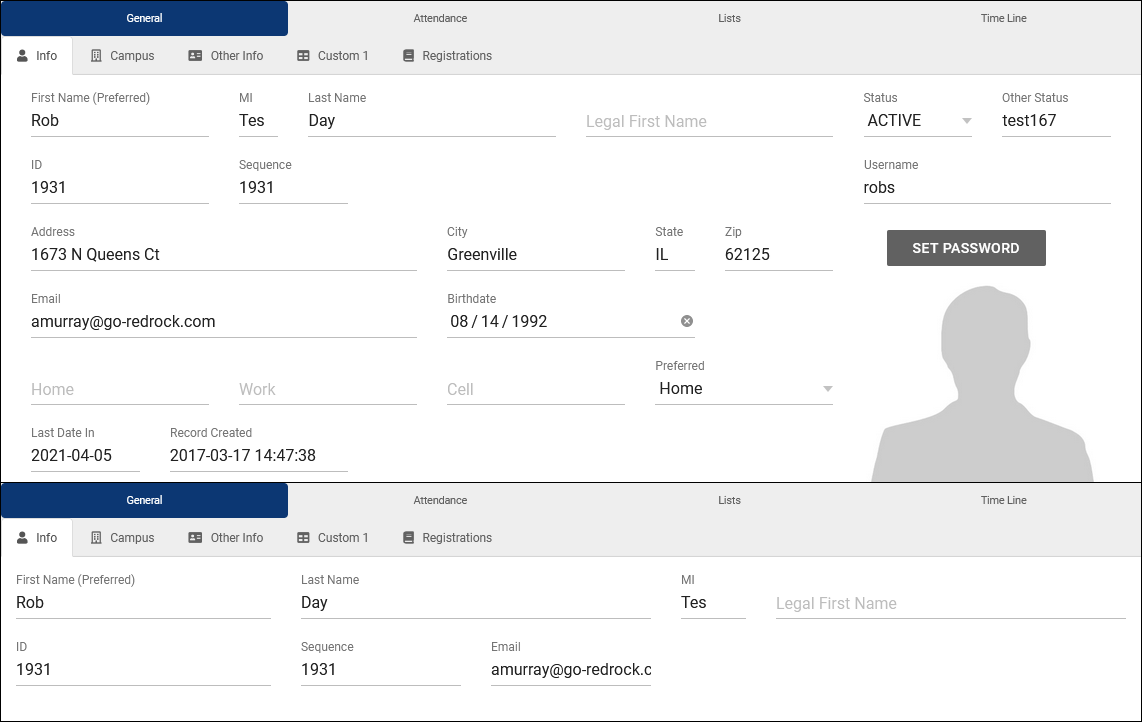
- Allow user (non admins) to create student records
- By default, only staff assigned to the Profile Admin user level or higher are allowed to manually create student accounts. This option can be enabled to grant that permission to regular staff.
- By default, only staff assigned to the Profile Admin user level or higher are allowed to manually create student accounts. This option can be enabled to grant that permission to regular staff.
- Allow user to delete student records [Standard Only]
- This determines if staff members in this group can delete student profiles. It is recommended to leave this unchecked for non-administrative groups.
- This determines if staff members in this group can delete student profiles. It is recommended to leave this unchecked for non-administrative groups.
- Allow user to create prospective student requests
- Allows users in this group to create prospective student records from the students listing. Requires additional configuration in global settings, click here to learn more.
- Allows users in this group to create prospective student records from the students listing. Requires additional configuration in global settings, click here to learn more.
- Prevent mass emailing from Student Listing
- This prevents these users from sending batch emails to multiple students at once.
- This prevents these users from sending batch emails to multiple students at once.
- Prevent Action Send Email to Single Student
- This prevents users from sending emails to individual students.
- This prevents users from sending emails to individual students.
- Hide [field] of student
- These options allow you to toggle certain fields on or off depending on what these users should have access to, such as IDs and phone numbers. Some of these are only available if the “View/Edit Student using form” option is set to “Brief.”
- These options allow you to toggle certain fields on or off depending on what these users should have access to, such as IDs and phone numbers. Some of these are only available if the “View/Edit Student using form” option is set to “Brief.”
- Show Student Flag Information (Flag Text)
- This enables a "Flag Information" text field in the "Other Info" tab of student profiles. If data is entered in that field, a grey flag icon will appear next to the student's name on the students listing.
- This enables a "Flag Information" text field in the "Other Info" tab of student profiles. If data is entered in that field, a grey flag icon will appear next to the student's name on the students listing.
- Hide [tab] of student
- These options allow you to disable the additional tabs in student profiles. The "Campus" tab contains some preset fields that have been enabled in Student Entry Choices under Global Preferences, and the custom tabs can be renamed in that same menu. Other Info and all custom tabs exclusively contain custom fields.
- These options allow you to disable the additional tabs in student profiles. The "Campus" tab contains some preset fields that have been enabled in Student Entry Choices under Global Preferences, and the custom tabs can be renamed in that same menu. Other Info and all custom tabs exclusively contain custom fields.
- Limit Student listings to the chosen list
- This allows you to restrict the students viewable by staff in this group to only students on a specific student list. If a list is chosen, an addition option will be made available: Additionally Limit student listing only linked consultant. If that option is checked, then the consultants in this profile will further only be able to view students linked to them via 'Linked Staff to Student.'
- This allows you to restrict the students viewable by staff in this group to only students on a specific student list. If a list is chosen, an addition option will be made available: Additionally Limit student listing only linked consultant. If that option is checked, then the consultants in this profile will further only be able to view students linked to them via 'Linked Staff to Student.'
Visit Access Preferences
- Allow user to view student visit satisfaction & Allow user to view consultant visit satisfaction
- If visit satisfaction questions are enabled in your profile's log in/out preferences, these options allow you to control which groups can access the responses that were recorded. View and Edit allows this group to change the satisfaction rating for visits, while View only allows them to access what was previously saved. No Access hides these fields entirely in visit records. The visit satisfaction question will still appear during logout if View/No Access is selected, these options only affect concluded visit records.
- If visit satisfaction questions are enabled in your profile's log in/out preferences, these options allow you to control which groups can access the responses that were recorded. View and Edit allows this group to change the satisfaction rating for visits, while View only allows them to access what was previously saved. No Access hides these fields entirely in visit records. The visit satisfaction question will still appear during logout if View/No Access is selected, these options only affect concluded visit records.
- Allow user to send notes to coach/advisor
- Provides these staff members the ability to initiate the Visit Notes email from visit records, and enables automatic sending of the Visit Notes email if it's configured to do so in your Profile Prefs.
- Provides these staff members the ability to initiate the Visit Notes email from visit records, and enables automatic sending of the Visit Notes email if it's configured to do so in your Profile Prefs.
- Prevent log in/out from KIOSK and Log Listing
- If checked, these staff members will not be able to log students in/out on the Kiosk or Log Listing pages.
- If checked, these staff members will not be able to log students in/out on the Kiosk or Log Listing pages.
- Allow user to save changes to visit records (and which visits)
- This controls whether or not these staff members can save changes to visit records. If enabled, you can specify if they can save changes to their own visits or all visits.
- This controls whether or not these staff members can save changes to visit records. If enabled, you can specify if they can save changes to their own visits or all visits.
- Allow user to delete visit records (and which visits)
- This determines if staff members in this group can delete visit records. If enabled, you can specify if they can delete their own visits or all visits.
- This determines if staff members in this group can delete visit records. If enabled, you can specify if they can delete their own visits or all visits.
- Prevent user from accessing Batch Visits
- If checked, users in this group will be unable to record visits with the Batch Visits utility.
- If checked, users in this group will be unable to record visits with the Batch Visits utility.
- User may view which visits
- This determines if these staff members can view all visits, only their own, or none.
- This determines if these staff members can view all visits, only their own, or none.
- User may view which work visits
- Similar to student version of this option, but for work visits instead.
- Similar to student version of this option, but for work visits instead.
- Show the Utilization Tab on Main Menu
- Enables the Utilization widget, allowing quick access to recent visits from the dashboard. Consultant accounts will also have the ability to quickly filter to only their own visits. All visit access permissions are still used, this does not provide additional privileges, only faster access to these records.
- Enables the Utilization widget, allowing quick access to recent visits from the dashboard. Consultant accounts will also have the ability to quickly filter to only their own visits. All visit access permissions are still used, this does not provide additional privileges, only faster access to these records.
- Show the Status Charts on Main Menu
- Enables access to Status Charts, essentially menu reports that you can run from the dashboard. Click here for more information on Status Charts.
- Enables access to Status Charts, essentially menu reports that you can run from the dashboard. Click here for more information on Status Charts.
- Show the Watch Lists on Main Menu
- Allows access to the Watch Lists from the dashboard. This only displays the lists that this group has access to. Click here for more information on Watch Lists.
- Allows access to the Watch Lists from the dashboard. This only displays the lists that this group has access to. Click here for more information on Watch Lists.
- Show the Tasks & Create Task on Main Menu
- Enables access to the Create Task widget on the dashboard. Click here for more information.
- Allow user to create student when not found in Log in Lookup
- If a student record isn’t found based on the ID entered on the Log Listing, staff members can be given the ability to immediately create a new account for the student they’re logging in. This is generally not recommended as it can lead to duplicate students being created if someone was entering the wrong identifier in the first place.
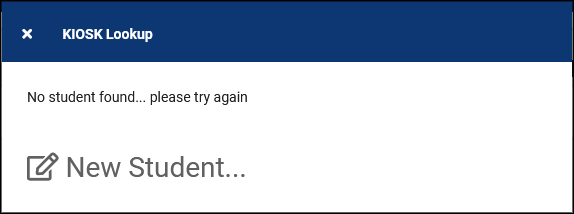
- Show KIOSK for Generic All Profiles option
- This adds an additional Kiosk option for these users that allows students to login to any Profile's center from the same Kiosk.
- This adds an additional Kiosk option for these users that allows students to login to any Profile's center from the same Kiosk.
- Lock all KIOSKs and Log Listings to IP Zone for this Group
- This option allows you to restrict kiosk/log listing access based on IP address. You can define IP address zones or simply an "On Campus" IP address in system preferences. The default value of blank will not restrict access based on IP.
- This option allows you to restrict kiosk/log listing access based on IP address. You can define IP address zones or simply an "On Campus" IP address in system preferences. The default value of blank will not restrict access based on IP.
- Allow user to log resources in and out
- This allows these staff members to log resources in/out via a “Log Resource” button within the “Other” tab in the navigation bar.
- This allows these staff members to log resources in/out via a “Log Resource” button within the “Other” tab in the navigation bar.
- Allow user to view what resource the student has logged out
- This allows staff members in this profile view resources that students have logged out.
- This allows staff members in this profile view resources that students have logged out.
- Allow consultant to login for work at their main menu
- Provides consultant accounts the ability to login for work visits from the dashboard. This will appear as a clock icon in the navigation bar where they can initiate or conclude their work visit without going through the log listing or a kiosk.
- Provides consultant accounts the ability to login for work visits from the dashboard. This will appear as a clock icon in the navigation bar where they can initiate or conclude their work visit without going through the log listing or a kiosk.
- Hide 'Is Work' for Quick Visits / Visit Entry
- If enabled, these users will not be allowed to create quick work visits. Work visits must be recorded by logging in and logging out.
- If enabled, these users will not be allowed to create quick work visits. Work visits must be recorded by logging in and logging out.
- Allow consultant to login for work on KIOSK where the user logged in is themself
- By default, staff members are not allowed to login for work visits on kiosks that they initiate. If this option is enabled, that restriction is lifted, allowing them to login for work on their own kiosks/log listings.
- By default, staff members are not allowed to login for work visits on kiosks that they initiate. If this option is enabled, that restriction is lifted, allowing them to login for work on their own kiosks/log listings.
- Allow staff to view work visits on schedule
- Log In to Work: On/Off Campus Restriction
- Both of these options allow you to restrict whether or not this user can start a work visit from their dashboard depending on their IP address. After you designate an on campus IP address in your system preferences, you can set these preferences to one of 4 values:
- No Restriction - No additional restrictions regardless of IP.
- Only with Appointments - Can only login for work during an appointment or drop-in availability time, with the allowed login window being determined by No sooner than x minutes before appointment starts and No later than x minutes after appointment starts.
- Only with Appointments and Availabilities - Same as above, but also including availabilities in general. This is typically used if consultants are available for drop-in if their availabilities are not booked.
- Only with Appointments same modality ('Off Campus' only) - Same as above, but only if the appointment or drop-in availability is online.
- Appointments/Availability same Modality ('Off Campus' only) - Same to above, additionally including any availabilities even if unbooked.
- Not Allowed - Block work visit login entirely for that IP zone.
- Both of these options allow you to restrict whether or not this user can start a work visit from their dashboard depending on their IP address. After you designate an on campus IP address in your system preferences, you can set these preferences to one of 4 values:
- Table Access
- This primarily determines which Listings these staff members can access. For example, you could entirely prevent a group from accessing the student listing, course listing, etc. Each table can be set to a different access level:
- View Listing and Edit provides full access to this listing, along with editing permissions.
- View Listing (No Edit) means that these staff can view the Listing page and the records within it, but can't save any changes.
- Edit (No Listing) allows staff to edit records, but not browse the Listing page. A common example here would be Course Lists, where Consultants may be able to edit their own Course List, but you don't want them browsing to or editing others.
- View Entry (No Listing) will prevent users from accessing the Listing or applying changes to individual records, but they are allowed to view individual records if provided a link.
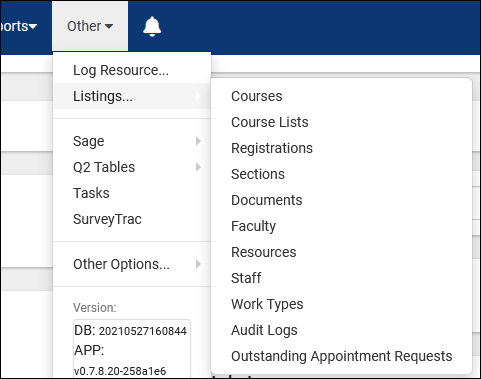
- Custom Views
- Custom listing views can be shared to groups, allowing staff in this group to select these alternate views when needed.
- Normal View will be available to switch to from that listing, but will not be the default.
- Default View - will be the default when these staff members open the listing, but they can still switch to other views (or standard).
- Only this View will be the only view this group can see for the related listing, they will not be allowed to switch to other views.
- Custom Searches
- Custom Saved Searches can be saved and shared to groups.
- Custom Saved Searches can be saved and shared to groups.
- Allow user to access reports
- This enables or disables access to reports. Some reports are restricted to certain User Levels independent of group, click here for more information. Choose the specific reports that users in this group can generate using the menu below.
- This enables or disables access to reports. Some reports are restricted to certain User Levels independent of group, click here for more information. Choose the specific reports that users in this group can generate using the menu below.
- Allow user to access payroll reports
- This enables or disables access to payroll reports specifically. The above option also needs to be enabled for a staff member to view these reports. These reports are also only available to users designated as "Profile Admin" or higher.
- This enables or disables access to payroll reports specifically. The above option also needs to be enabled for a staff member to view these reports. These reports are also only available to users designated as "Profile Admin" or higher.
- [ SurveyTrac ] SurveyTrac Access
- Controls which surveys these accounts have access to.
- Controls which surveys these accounts have access to.
- [ SAGE ] Allow user to view referrals on Dashboard
- Adds a Referrals tab on the Dashboard providing quick access to referrals assigned to themselves, including information such as the Type, Date created, Date Followed-up, and Date Processed.
- Adds a Referrals tab on the Dashboard providing quick access to referrals assigned to themselves, including information such as the Type, Date created, Date Followed-up, and Date Processed.
- [ SAGE ] User may view which referrals
- This option allows you to choose whether staff members can view all referrals or exclusively referrals they personally created.
- This option allows you to choose whether staff members can view all referrals or exclusively referrals they personally created.
- [ SAGE ] User may DELETE which referrals
- Choose which referrals staff in this group can delete. All, their own, or none.
- Choose which referrals staff in this group can delete. All, their own, or none.
- [ SAGE ] Referral Type Access
- This determines which referrals these staff members can access, including editing permission.
- This determines which referrals these staff members can access, including editing permission.
- [ Q2 ] Q2 Module Group Access
- This determines which Q2 Configs these staff members can access.
- This determines which Q2 Configs these staff members can access.
- [ Text Alerts ] Allow user to view and edit the student field ‘Receive Text Alerts’
- This option gives staff in this group the ability to enable or disable text alerts for students from the student’s profile.
- This option gives staff in this group the ability to enable or disable text alerts for students from the student’s profile.
- [ Text Alerts ] Allow user to send SMS messages to students
- This option provides staff the ability to send students messages directly, either from the Log Listing or the Student’s Profile under the “Actions” tab.
- This option provides staff the ability to send students messages directly, either from the Log Listing or the Student’s Profile under the “Actions” tab.
- [ Text Alerts ] Allow user to send SMS messages to staff
- Just like students, staff can also be sent SMS messages from their profile via the “Actions” tab. This option determines whether or not this option is available for staff in this group.
- Just like students, staff can also be sent SMS messages from their profile via the “Actions” tab. This option determines whether or not this option is available for staff in this group.
- Prevent user from Viewing Scheduler widget
- If checked, these users will not be able to access search availability widgets.
- If checked, these users will not be able to access search availability widgets.
- Prevent User from Viewing Attendance menu
- If checked, these users will not be able to access the "Attendance" menu in the navigation bar, including utilities such as kiosks, log listings, batch visits, etc.
- If checked, these users will not be able to access the "Attendance" menu in the navigation bar, including utilities such as kiosks, log listings, batch visits, etc.
- Prevent User from Creating Staff Records
- If checked, these staff members will not be able to create additional staff accounts.
- If checked, these staff members will not be able to create additional staff accounts.
- Prevent User from Editing Staff/Student Passwords
- If checked, these users will not be allowed to set new passwords for students/staff.
- If checked, these users will not be allowed to set new passwords for students/staff.
- Prevent User Viewing Grades
- If checked, these users will be unable to view the grade field in registration records.
- If checked, these users will be unable to view the grade field in registration records.
- Disable Notifications
- By default, staff will receive notifications about visits, appointments, tasks, outstanding appointment requests, and more in a bell icon in their navigation bar. This box can be checked to disable this feature for staff in this group.

- Disable Student Timeline Emails Option/Extra Details/Appt Searches
- If this group has access to student records, the student timeline can display email history, extra details (canceled/missed appointments, exact login/out times), and appointment searches. These options can be checked to block access to those details.
- If this group has access to student records, the student timeline can display email history, extra details (canceled/missed appointments, exact login/out times), and appointment searches. These options can be checked to block access to those details.
- Override Required Field Validation (SysAdmin only)
- If checked, SysAdmins will be allowed to save records without filling out required fields (standard or custom fields). This option can only be enabled in the SysAdmin group.
Add existing group
If you already have a group assigned to another profile (or no profile at all) that you want to provide profile access to, you can use the "Add existing group" utility. This allows us to provide staff members assigned to that group the ability to schedule and manage visits in centers outside of their own profile.
To accomplish this, click the hamburger icon again, and choose “Add Existing Group.” Next, select the group you want to add, which adds it to the list of groups. When clicking on this group (that still primarily exists in another profile), we’re given a restricted set of options, as it’s only displaying options relevant to this secondary profile.
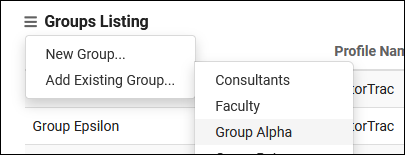

- Group Name
- Changing the name here will also change its name in the primary profile.
- Changing the name here will also change its name in the primary profile.
- Profile
- This shows the primary profile this group is assigned.
- This shows the primary profile this group is assigned.
- Scheduling and Visits access
- This is exactly the same as assigning center permissions in standard groups. This controls which centers staff members can view/edit visits and schedules in.
Student data is one of the most important parts of your Trac System, on top of being the record that all their visits, appointments, documents, and more are assigned to, you also have the student's information directly. You can run reports on visits grouped by student majors, or send emails to students of a certain class, cohort, or any other field you have available. This article goes over some of the ways you can search for these records.
The Students Listing itself (found by clicking 'Students' in the Navigation Bar) contains all student records uploaded to your Trac System. From this page, we're able to manage student data in bulk, creating lists, sending emails, or submitting SAGE referrals, or we can open a specific student record and manage just one student profile at a time.
Each column of information displayed has a clickable header that will sort the listing accordingly. Clicking once sorts ascending, a second click will sort descending.
Using the Search Bar on this screen, we can easily perform quick searches to find specific students. Right clicking in the search bar (shown below) will provide a list of available student fields to search, click any of these to auto-fill the search bar.
Example Searches:
- Find a student by a single value, such as ID. Specifying 'Students.ID=' actually isn't required for ID or Name searches, but it works well as an example.
- Students.ID=1931
- Students.ID=1931
- ...or name. Names should be formatted as 'Last, First' or 'First M Last'. 'First Last' will also work if middle names are not being imported.
- Day, Rob
- Day, Rob
- Search multiple fields at once, separate your searches by a space.
- Students.Major=Mathematics Students.Class=Sophomore
- Students.Major=Mathematics Students.Class=Sophomore
- When performing multiple searches where at least one field contains a space, make sure to surround the contents you're searching for with quotation marks.
- Students.Major="Chemical Engineering" Students.Status=Active
- Students.Major="Chemical Engineering" Students.Status=Active
- Search in Custom Fields. It's recommended to use the right-click menu to select these, as it will always auto-fill the correct field name.
- #sql:InState#=Yes
- #sql:InState#=Yes
- Date searches such as this are required to be formatted as YYYY-MM-DD
- Students.BirthDate=1993-07-16
- Students.BirthDate=1993-07-16
- We also offer a special search to find students where today is their birthday.
- birthdaytoday
- birthdaytoday
- Additionally, it's even possible to search for students who received a batch email from TracCloud. The search below would return all students who received a batch email from TracCloud on 2024-10-23 where the subject contained the phrase "Upcoming Event".
- MailQueue.CreatedOn="2024-10-23@" MailQueue.Category=batch_email MailQueue.Subject="@Upcoming Event@"
- MailQueue.CreatedOn="2024-10-23@" MailQueue.Category=batch_email MailQueue.Subject="@Upcoming Event@"
Students Search
The Student Listing also has a unique Search utility found in the hamburger menu . This utility has the ability to search related tables to find relevant students. This includes the ability to run searches such as "students who have had appointments in the last 7 days" or "students who have ongoing referrals."
- Search Type
- This can be set to New Search, Search Selection, Remove found from Selection, or Add found to Selection, depending on the desired effect of this search.
- General Info tab
- This tab is where you can search for basic information about the student. ID, Status, Name, etc.
- Appointments
- This tab allows you to search for students by appointment information. For example, "students who had an appointment from 02/10 to 02/20 with a status of Missed." Any fields that support wildcards additionally support the | character for "or."
- Visits
- This tab allows you to search for students by visit info. For example, "students who visited more than 2 times from 02/10 to 02/20 where the subject was MAT100." Any fields that support wildcards additionally support the | character for "or."
- Registration
- This tab allows you to search for students by registration info. For example, "students who are actively enrolled in more than one math course." Any fields that support wildcards additionally support the | character for "or."
- Documents
- This allows you to search for students by documents. "Students who have a document of a certain filename uploaded in the last month."
- Surveys
- Students who have received or responded to a survey in a certain time period. Requires SurveyTrac.
- SAGE Referrals
- Students who have ongoing or completed referrals of a specific type in a specified date range. Requires SAGE. Any fields that support wildcards additionally support the | character for "or."
- Assignments
- This tab allows you to search by potential assignments. Any fields that support wildcards additionally support the | character for "or."
- Resources
- This tab allows you to search for students by their resource usage, whether they have certain items checked out or overdue. Any fields that support wildcards additionally support the | character for "or."
- Terms & Conditions
- Search by accepted terms and conditions. Any fields that support wildcards additionally support the | character for "or."
- Success Plans
- Search by assigned Success Plans.
Hamburger Menu
Every listing page in the Trac System features a hamburger menu with utilities to search for or interact with your list of records. Some of these options are specific to a certain listing/record-type, others are shared. The following list includes definitions for the hamburger menu options available on this listing, and how they can be utilized.
- List All
- This option will show all records on the current listing. Some listings have an additional toggle for only showing "Active" records, such as Students and Registrations, which will still override a "List All" search if checked.
- This option will show all records on the current listing. Some listings have an additional toggle for only showing "Active" records, such as Students and Registrations, which will still override a "List All" search if checked.
- Search
- This utility will open a pop-up window unique to each Listing it's present on, allowing you to search your records by a number of different fields. In the case of the Student Listing, you could use this to search related records, such as 'Students who have at least 2 Visits in the Learning Center' or 'Students with a recent Document upload in their timeline.'
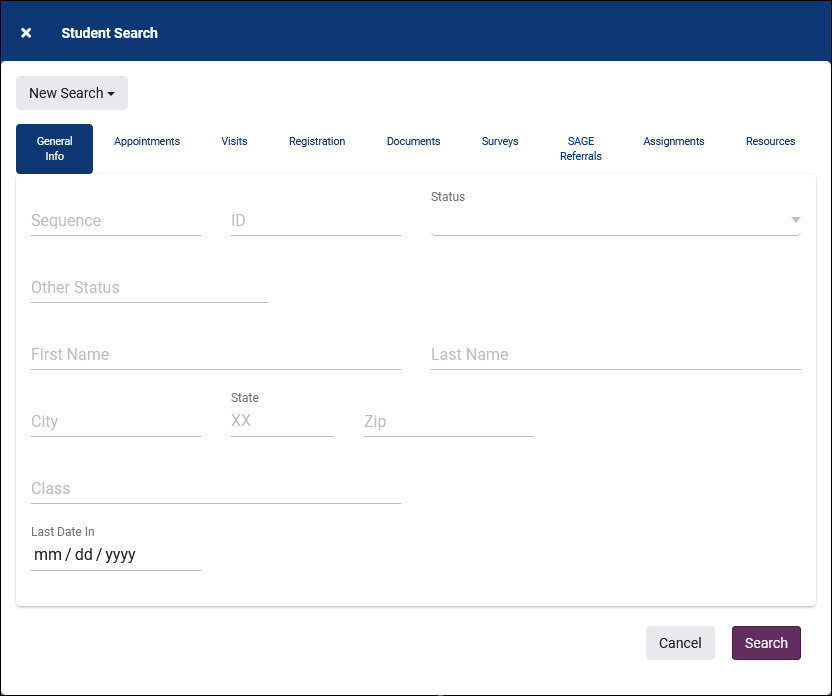
- Power Search
- This option provides a simple but powerful search utility to find the records you need. String together multiple searches, adding or removing results for each. Use Search Symbols to include ranges of data, and Save Searches for later use if needed. The search term 'blankornull' can be used to find all records with a value of nothing ("") or null ().
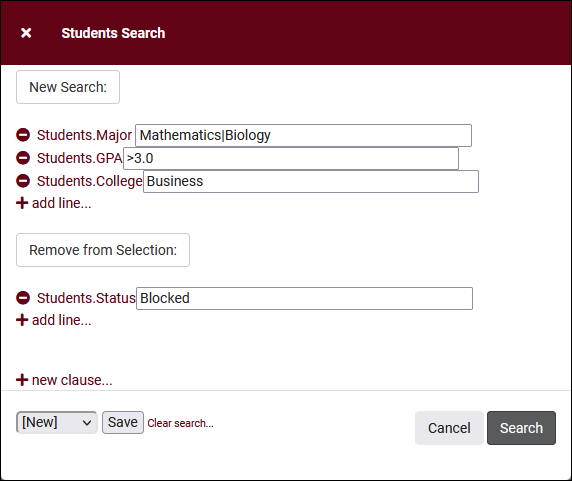
- Search by Term Enrollment
- Lists
- See Student Lists and Watch Lists for more information.
- See Student Lists and Watch Lists for more information.
- Saved Searches
- See Saved Searches for more information.
- See Saved Searches for more information.
- Find/Merge Duplicates
- These utilities can be used to cleanup duplicate records in your Trac System. We highly recommend reaching out to Redrock Support directly for assistance in cleaning up this data.
- These utilities can be used to cleanup duplicate records in your Trac System. We highly recommend reaching out to Redrock Support directly for assistance in cleaning up this data.
- Find by Values
- Change Field Values
- This utility allows you to make modifications in to your records in bulk. Similar to the Merge Duplicates utility, we highly recommend coordinating with Redrock Support directly on this setting.
- This utility allows you to make modifications in to your records in bulk. Similar to the Merge Duplicates utility, we highly recommend coordinating with Redrock Support directly on this setting.
- Selected...
- The Selection Tool offers several options to filter and manage your records. More information on this feature can be found in its own dedicated article here.
- The Selection Tool offers several options to filter and manage your records. More information on this feature can be found in its own dedicated article here.
- Views
- See Views for more information.
- See Views for more information.
- Send Survey
- Allows you to send a survey to the current user list. More information.
- Allows you to send a survey to the current user list. More information.
- Register In
- Allows you to quickly enroll a student in a new registration. Depending on your import configuration, manually recreated registrations may be deactivated during your auto-import.
- Allows you to quickly enroll a student in a new registration. Depending on your import configuration, manually recreated registrations may be deactivated during your auto-import.
- Assign Success Plan
- Allows you to assign a new Success Plan to the current student list. More information.
- Allows you to assign a new Success Plan to the current student list. More information.
- Create Referral
- Allows you to create a batch referral through SAGE. More information.
- Allows you to create a batch referral through SAGE. More information.
- Create Task
- Allows you to send a task to the current student list. More information.
- Allows you to send a task to the current student list. More information.
- Toggle Photos
- Enable or disable student photos on the Student Listing.
- Enable or disable student photos on the Student Listing.
- Create Chart
- Based on the data currently being viewed a chart can be generated to visually illustrate the relationships in the data.
- Based on the data currently being viewed a chart can be generated to visually illustrate the relationships in the data.
- Export CSV
- Export current listing contents to a CSV file.
- Export current listing contents to a CSV file.
- Send Email
- Allows you to send an email directly to a list of users.
- Allows you to send an email directly to a list of users.
- Send Email to Faculty
- This email utility allows you to email faculty linked to student registrations. The faculty recipients can be determined by subject, status, and grade. One email will be sent per linked registration, so if there are 3 students listed enrolled in MAT100 with Dave Smith, Dave Smith will receive 3 emails. Faculty recipients can also be filtered by scheduled day/time if section schedule is being imported.
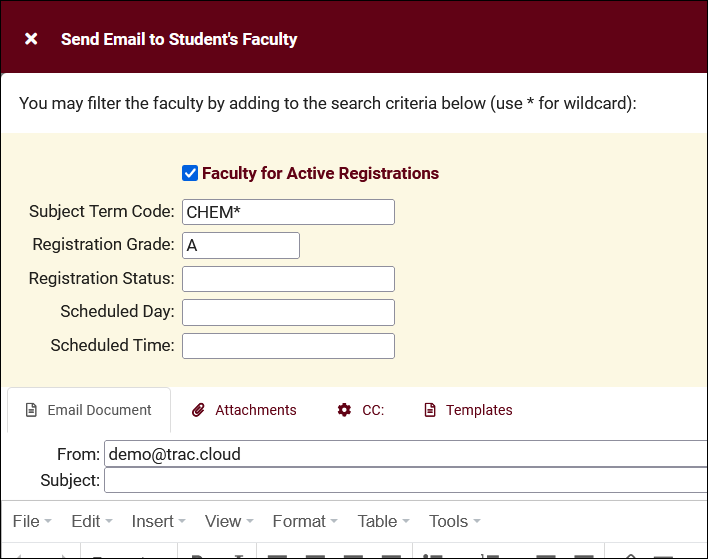
- Show these <records>
- This utility takes your selection of records, finds the related records, and takes you to that listing with the resulting records. For example, on the Registration listing, you can "Show these Students" to display the student records for the registrations that you were viewing.
- This utility takes your selection of records, finds the related records, and takes you to that listing with the resulting records. For example, on the Registration listing, you can "Show these Students" to display the student records for the registrations that you were viewing.
- Allows you to print the contents of the current listing, by extension this also allows you to export the current list as a PDF file.
- Allows you to print the contents of the current listing, by extension this also allows you to export the current list as a PDF file.
- New <Record>
- Allows you to create a new record based on your selected listing.
- Allows you to create a new record based on your selected listing.
See Also
Search Availability badges can be used to add information and indicators to availability slots. Each badge can appear for certain conditions, based on center, availability section/reason, location, skills/accommodations, etc.
Click "New Availability Badge" to begin. This will open a form where you can enter the details for your badge.
Manually Linked
Name
- Name of the Badge. This will not be displayed for students
- Name of the Badge. This will not be displayed for students
Availability Type
- Drop In, 1-on-1, or Group availability
- Drop In, 1-on-1, or Group availability
Consultant
- Assign a specific Staff
- Assign a specific Staff
Reason
- Assign a specific Reason
- Assign a specific Reason
Center
- Assign a specific Center
- Assign a specific Center
Section
- Assign a specific Subject
- Assign a specific Subject
Special Needs
- Select if applicable (more information)
- Select if applicable (more information)
Online
- Availability Type; In Person, Online, Online Optional, or Phone
- Availability Type; In Person, Online, Online Optional, or Phone
Location
- Location of the availability
- Location of the availability
Once you've decided where the badge is needed and have made your selections from the options above, you can now determine which icon, colors, and info work best for the badge created.
Color:
- Choose your preferred color for the badge. Consider contrast when setting this color, availability backgrounds are as follows.
- 1-on-1: #d3f8deGroup: #F5F5B4Drop-in: #d0ffffAsync: #d8c7ff
Icon:
- Choose from the list of available icons or alternatively click the button to use a custom icon from Font Awesome. In that case, you would copy the class values from the icon you want to use.
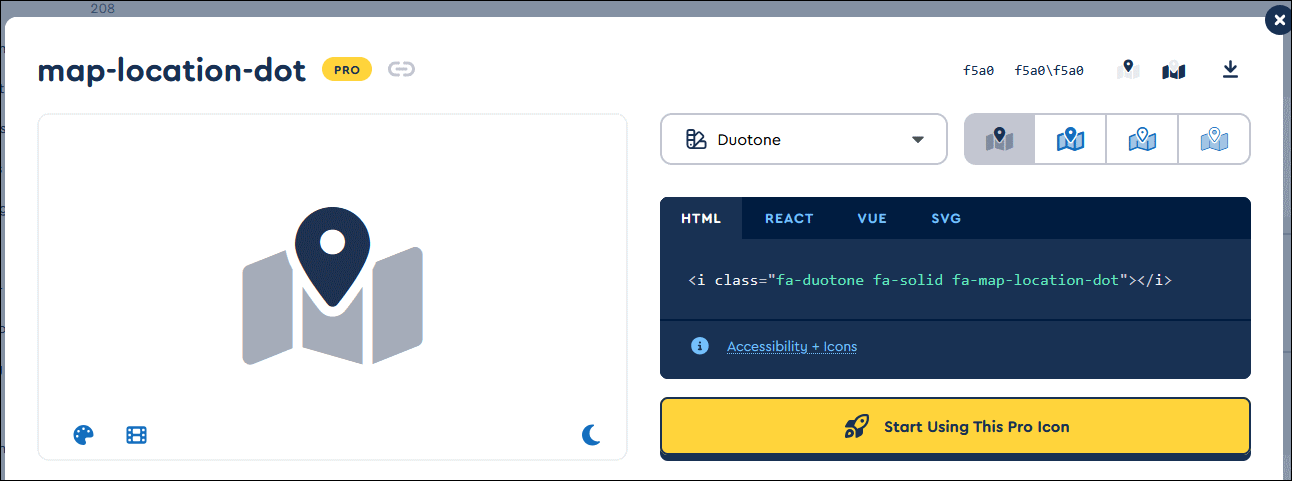
- Paste them into TracCloud.

- Then click 'OK.'

Info Text:
- Enter text that will display when students & staff hover over the icon
- Enter text that will display when students & staff hover over the icon
In the example screenshot above, this badge will only appear on availabilities of staff who have been assigned the “ASL” accommodation and are available in the Learning Center. Once saved, your badge will appear in the profile preferences if you need to edit/delete it later.
Any fields left blank will not be considered for where this badge appears, you can be as specific or non-specific as needed. You can also create as many badges as you'd like, more than 1 tag can appear for the same availability. When students search for an availability, the badges will display to the right of the screen as shown below.
2022-04-28 | Resend Student Emails
You can now resend student emails. From the student timeline, click on the email you want to resend, then click "Resend this Email."
Getting Started / Basics
Student Visits allow you to record when your students met with consultants. There are several options available for creating these visits, including real-time options like the Log Listing or Kiosk, used by staff and students respectively. Quick Visits can be used to create visits from scratch, and Batch Visits provides several tools for recording visits in bulk. There are even automated options for online appointments or when a staff mark appointments as attended manually.
This article will be going over the different options available and how you can utilize them for your system. This portion of our guide will not be covering work visits, for more information on those, take a look at our payroll tracking article.
The Log Listing can be used by staff members to log students into or out of your center, or to review who is currently logged in with on-going visits. If wait time is being tracked, this page would also be used to manage visit statuses and coordinate which consultants will be assigned to their visits.
The Log Listing can be accessed by going to the Attendance tab in your navigation bar, as seen in the screenshot below. The available choices are split up into 3 groups.
- Center Log Listing
- When you create a new center, both a kiosk and a log listing will be made available by default, unless specifically disabled in the center OR if your system only allows custom kiosks to be used. Students who are logged in on these log listings will have their visits assigned to the selected center.
- Custom Kiosks
- In addition to the default center kiosks, you can also create custom kiosks, which are already linked to a specific center/consultant/reason/etc. These are frequently used for workshops or SI events, but they can be utilized for any visit tracking where a field needs to be predefined.
- Log Listing for [Profile]
- This option operates similarly to standard center kiosks/log listings, except it includes all centers that your permission group has access to. When logging a student in on this type of log listing, the first question you will be asked is what center you want to log the student into.
After you’ve reached the log listing page, you can view the students who are currently logged in. The button can be used to sort the log listing by other fields. To log another student in, begin typing their ID, name, or scan their barcode into the box in the center of your screen.
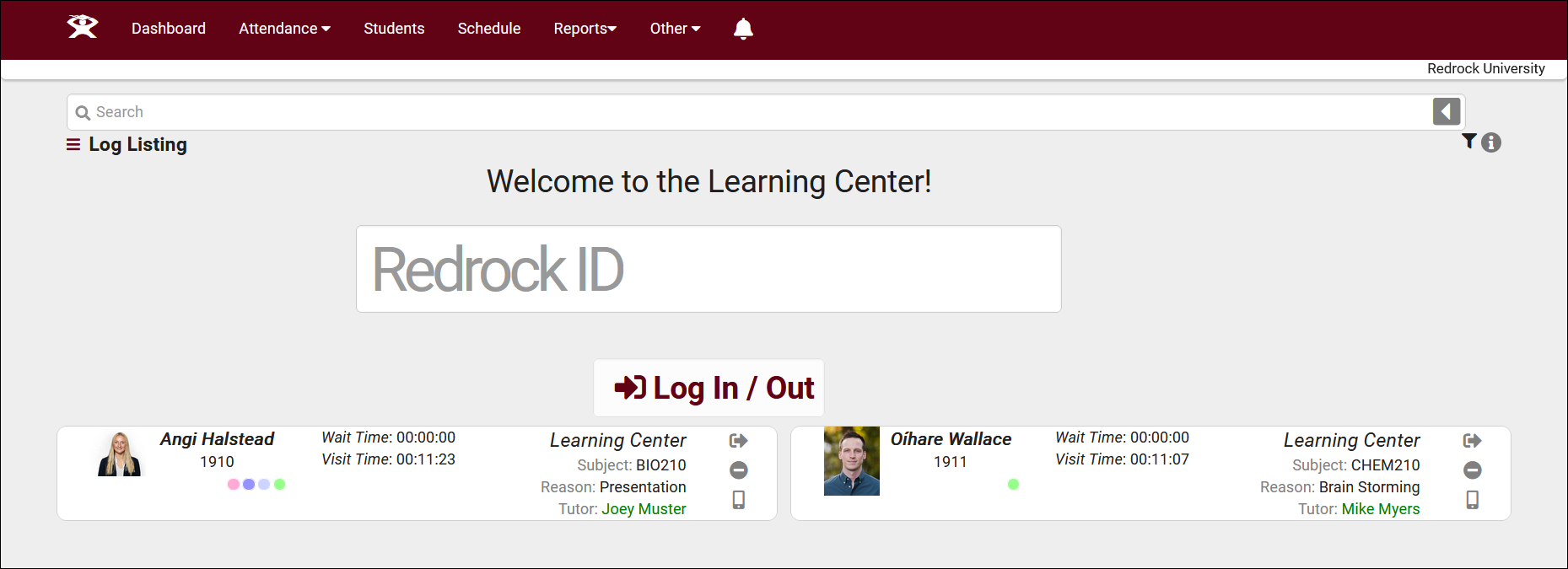
After pressing enter or clicking on Log In / Out, you will be prompted to choose a consultant, subject, and/or reason for the visit depending on which fields are enabled in your profile. Additionally, custom questions can be configured to appear here as well. If the student is logging in at the same time as their scheduled appointment, the subject/reason/consultant will be selected automatically to match that appointment.
The following page displays a welcome message as configured in your profile preferences, and can show any announcements that have been designated as "Show on KIOSK."
After completing the log process, the student will be added to the log list with any information they entered. The information visible here is determined by your profile preferences.
If your profile has been configured to track wait time, you will additionally see a icon on this page. This is used to manage the status of the visit, either "Waiting" or "Started." After you click on this icon and change the status to "Started: [Consultant]," the icon will change to . If this icon does not appear, you will need to add "Wait Status Button" in your profile preferences. Setting the status to "Concluded" would log the student out. The "Show All" button can be used to override the linked advisor filtering on the consultant list (if enabled for your system).
To log the student out, click the icon from the list or enter their ID/Name/Barcode in the center box again. After pressing enter or Log In / Out, you will see a confirmation prompt to confirm that you want to log the student out.
After a visit has been concluded, it will be removed from the log listing and kiosk, and you will be able to find it in the student's history or on the attendance listing.
The Kiosk is used by students to log themselves into or out of your center. This page generally operates similarly to the log listing, but with much stricter permissions and fewer visit management utilities, as we're expecting students to be interacting with this page directly.
Kiosks can be accessed by going to the Attendance tab in your navigation bar, as seen in the screenshot below. The available choices are split up into 3 groups, just like the log listings.
- Center Kiosk
- When you create a new center, both a kiosk and a log listing will be made available by default, unless specifically disabled in the center OR if your system only allows custom kiosks to be used. Students who are logged in on these kiosks will have their visits assigned to the selected center.
- Custom Kiosks
- In addition to the default center kiosks, you can also create custom kiosks, which are already linked to a specific center/consultant/reason/etc. These are frequently used for workshops or SI events, but they can be utilized for any visit tracking where a field needs to be predefined.
- Kiosk for [Profile]
- This option operates similarly to standard center kiosks, except it includes all centers that your permission group has access to. When a student logs in on this type of kiosk, the first question they will be asked is what center they want to log into.
After you've opened a kiosk, you will notice that your navigation bar tools have disappeared, and you have been logged out. Depending on your single sign-on solution, you may be prompted to additionally open a new tab to end your SSO session. Follow the instructions on screen if this is the case.
The information shown on the kiosk is also significantly more restricted that the log listing. Our example below shows student names, but hiding all student information is also a common configuration.
A student can login by typing their ID/name, swiping their barcode, or by scanning the QR code in the center of the screen with their phone. After starting the login process, they will be prompted to choose a consultant, subject, and/or reason for the visit depending on which fields are enabled in your profile. Additionally, custom questions can be configured to appear here as well. If the student is logging in at the same time as their scheduled appointment, the subject/reason/consultant will be selected automatically to match that appointment.
The following page displays a welcome message as configured in your profile preferences, and can show any announcements that have been designated as "Show on KIOSK."
In order for the student to logout, they would need to type their ID, swipe their barcode, or scan the QR code once again. After pressing enter or Log In / Out, they will see a confirmation prompt to confirm that they want to log out.
After a visit has been concluded, it will be removed from the log listing and kiosk, and you will be able to find it in the student's history or on the attendance listing.
Quick Visits allow you to create visits from scratch. For example, if a student forgot to login, or a login station wasn’t available at the time. Maybe even if you wanted to record a phone call or email conversation with the student as attendance in your system. This utility can be found by going to Attendance > Quick Visit, as well as a few other locations listed a little further down.

Choosing this option will open a new visit form, allowing you to enter all visit information from scratch. Select your student, consultant, reason, time, and so on. Custom fields can be created and made visible here as well. You can even upload documents to these visit records after saving, or send "visit notes" emails.
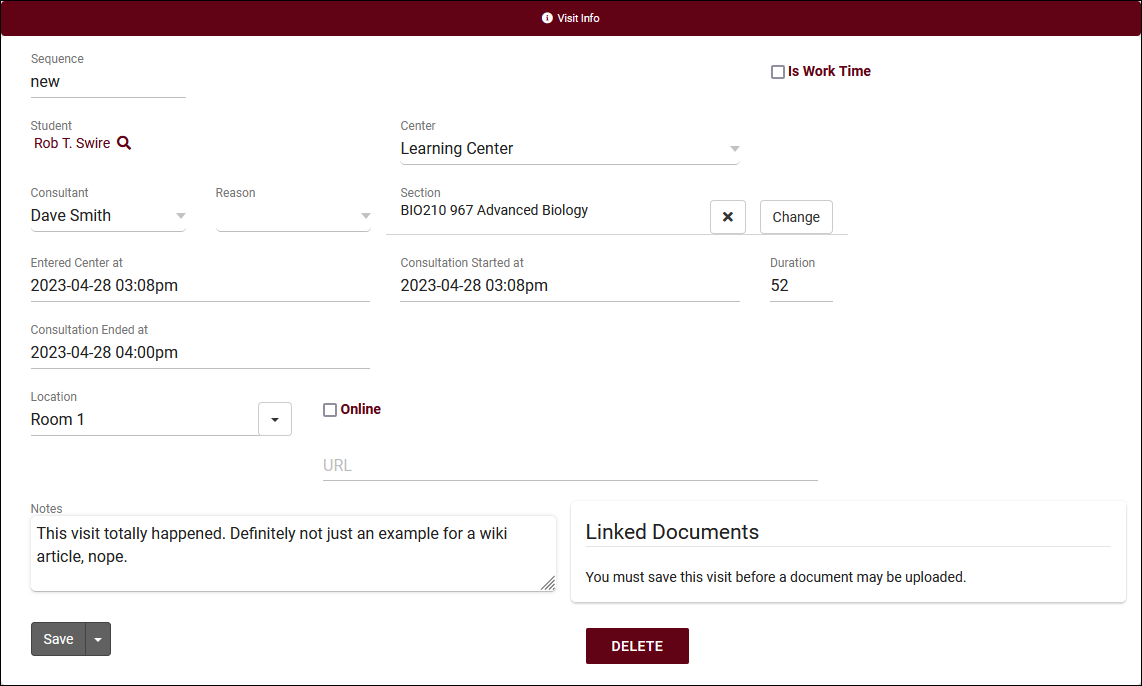
Clicking Save will create the new visit record, leaving the tab open if you need to make further adjustments. Alternate save options can be found under the arrow icon next to the save button. Save and Close will create the record and automatically close the tab in your browser. Save and New will create the record and immediately open a new quick visit form so you can start creating another visit.
In addition to the Quick Visit option under the Attendance menu, you can also create quick visits from a couple other locations. These all operate the same way, but may be easier to access depending on where you are in the system.
From the Attendance Listing, you can find a "New Visit" button within the hamburger menu , and from student records you can find "Create Visit" as the very first option under the "Actions" menu. The latter option will even automatically select the student in the new visit that you create.
The Batch Visit utility is a collection of other visit tracking tools. Some of the most common use cases for these are SI sessions and workshops, but that's not a strict requirement. The visits created here are the same as the visits created from the options above, so you can use these in any scenario where you might find them useful. Batch Visits can be found in Attendance > Batch Visits.
When you begin creating a Batch Visit, you will be asked to choose a center. After making your selection, you will be brought to the following screen. Fill out the visit information that you want to record for your students, then choose what batch visit tracking option works best for you, detailed below. If you have any visit custom fields, they will appear on this screen as well.
Batch Entry
The best way to describe Batch Entry is that it's a faster version of Quick Visit. Keeping the visit information entered at the top of your screen, you can repeatedly select new students, enter new notes as needed, and create their visits one after another without having to reenter the time, consultant, reason, etc.
- Remember Notes
- If this is checked, the notes field will not be cleared after you create each visit. This should be checked if you plan on reusing the same notes for each visit you're about to create.
- If this is checked, the notes field will not be cleared after you create each visit. This should be checked if you plan on reusing the same notes for each visit you're about to create.
- Remember Student
- If this is checked, the student field will not be cleared after you create the visit. This is almost always used when recording visits to a generic student account, such as for prospective students who don't yet exist in the Trac System.
As you save visits, they will be displayed at the bottom of the screen under Similar Visits.
SI Batch Entry
SI Batch Entry shows all students enrolled in the section that you selected, including wildcard selections (like BIO210*). When recording visits with a wildcard section chosen, a matching registration from each selected student's enrollments will automatically be used. Students are separated into two lists, students who have visited for the selected section before, and students who haven't. You can select students from both lists at the same time. After you create a visit for a student, they will be shown with a icon next to their name in the list.
- Remember Notes
- If checked, the notes you enter will not be cleared when creating the visits for your selection of students, allowing you to reuse the note for the next selection (if needed).
- If checked, the notes you enter will not be cleared when creating the visits for your selection of students, allowing you to reuse the note for the next selection (if needed).
- Show Active Students (with Active Registrations) Only
- By default, the list of students can include inactive students/registrations. This checkbox can be used to hide them from the results.
Batch Scan
Batch Scan allows you to create visits for many students at once based on a list of identifiers. ID, Email, Barcode, etc. For example, if you were recording attendance in a spreadsheet, you could copy your identifier column into "scanned data" to quickly create those visits in TracCloud.
- Skip Duplicates
- If checked, duplicate visits will not be created for students, even if they're present more than once in the list.
- If checked, duplicate visits will not be created for students, even if they're present more than once in the list.
- Scan Type
- Use this to specify what the data you're scanning refers to. ID, barcode, etc.
- Use this to specify what the data you're scanning refers to. ID, barcode, etc.
The Student Listing also has the ability to export a list of student IDs (see the 'Selected' menu under the hamburger icon ). Using this, you can easily search for and copy your list of students, and paste that list here to create visits for all of them at once.
Batch Codes
Batch Codes can be created at the top of the batch visit form. Clicking on Generate New Batch Code will provide a QR code which you can use to track attendance for this session. Notes can be applied to visits recorded with this QR code with the Auto Enter Notes field. If you apply any other changes to the visit details, such as duration, reason, etc, you can click Update Batch Code to get a new QR code.
After clicking on the QR code, you will be taken to the following screen. As a staff member, you can enter students IDs in the box to record their attendance, or students can scan the QR code with their phone to be taken to a login screen where they can record their own attendance. Similar to a kiosk, but no logout or additional questions necessary.
Any Batch Codes that you generate can also be found at the initial batch visit creation screen. This allows you to create these codes in advance and quickly access them later. Batch codes can also be deleted from this page if needed.
Unique to Batch Codes is the Handle Overlap Visits option. This determines how batch visits deal with conflicting visits for students.
Do Nothing (or leaving the field blank) is the default. In the event of a conflict, TracCloud will not automatically modify any records. It will simply allow both visits to exist at the same time.
Logout Previous will adjust visits that are still ongoing at the time of the batch visit being created. In this case, it will automatically conclude the ongoing visit by setting the end time to the start time of the batch visit.
Lastly, Split the Visit will separate an existing visit to fit alongside the batch visit. If the conflicting visit has already concluded, it will modify/split it into two separate visits to fit the new batch visit. If the conflicting visit is ongoing, it will conclude the visit to end at the start time of the batch visit. This is similar to Logout Previous, except Split the Visit will also start a new ongoing visit at the end time of the batch visit as well so the student can be logged out later.
Workshops / Workshop enrollment and attendance tracking
Drop-in availabilities offer 2 additional visit tracking tools depending on the meeting type (online or in-person). Take a look at our schedule management wiki article for details on creating these availabilities in the first place.
Ad hoc QR codes can be created by hovering over the availability and clicking on the icon. Choose a time for the visits that this QR code will generate, then click on "Generate QR Code."
This will open a new tab where you can enter student IDs to create visits, or allow students to scan the QR code themselves to create their own visits, no logout required.
Online drop-ins found in availability search results by students can also be used to automatically create visits. When the student clicks on the "Enter Online Session" button, they will be taken to the online meeting room and TracCloud will immediately create a visit for them matching the remaining duration of the availability time slot.
By marking an appointment as "Attended," TracCloud will automatically create a visit to match that appointment. This can be useful if your campus doesn't track visits with log listings/kiosks, or even as an alternative to quick visits if your student forgot to login. After saving, you can make further changes to this new visit record by clicking on the icon.
Online visit tracking is unique compared to the other options here, as no manual actions are required to create these visits. When students join an online appointment in TracCloud, their appointment will be marked as attended and a visit will be created to match the appointment details (unless you have specifically disabled this).
You may have noticed that the hyperlink on the dashboard or the {{Appointment.OnlineLink}} twig tag doesn't actually contain the online link you entered for the appointment, but instead a long TracCloud URL. Tracking attendance is the reason for this. When the student clicks on that link, TracCloud knows that they have joined the session and creates a visit record, then quickly redirects them to their Zoom, Webex, etc invite as usual.
See Also
Additional Features
The Resources feature in TracCloud offers a comprehensive system for managing items that can be checked in and out within a campus center. This functionality supports tracking and reporting resource utilization through an intuitive interface. Typical resources include laptops, calculators, and books that can be reserved, checked out, and returned by students or staff. The system allows for custom resource creation, including unique identifiers (barcodes), descriptions, and keywords to enhance searchability. Furthermore, resources can be categorized under Resource Types for improved reporting and restricted access where necessary.
The TracCloud system also supports advanced features such as Collateral Logic, which ensures collateral items are gathered and returned appropriately. Resource availability can be customized, including options for setting due dates, managing renewals, and allowing continuous access for Always Available resources. Additionally, users can define permissions for various user groups to control their ability to log, view, and edit resources, ensuring seamless integration with administrative workflows.
Reporting capabilities in TracCloud allow administrators to generate detailed reports on resource utilization and status, including overdue resources. Students can also be notified via customized emails or SMS messages regarding overdue or successfully returned items. Moreover, TracCloud enables reservation management, where students can reserve resources through their dashboard, adhering to predefined rules and restrictions. The system provides flexible search options, grouping functionalities, and export capabilities to streamline the reporting process, making resource management efficient and adaptable to various campus needs.
To begin creating a resource, go to Other > Resources > Resources > Hamburger menu > New Resource. Custom fields can also be added to this page.
- BarCode is the unique identifier for this item. Can be used to log resources in and out via a barcode scanner or swipe system, in addition to manually entering the value.
- Title is the name of this resource.
- Profile is the linked Profile for this resource. Staff will only be able to checkout a resource if their group has access to the linked profile.
- Checked Out To shows which user currently has this item checked out (if applicable).
- Collateral will store the collateral item collected due to the option below being enabled. This should be left blank when creating a new resource, as it will be automatically filled in when the item is checked out and collateral is collected.
- Collateral Logic enables Collateral functionality if checked. This will ask the staff member logging the resource in/out whether or not collateral has been gathered/returned.
- Reserved For shows who currently has this resource reserved.
- Always Available indicates that this resource doesn't need to be individually checked out or reserved, multiple users can check out the same resource at any time.
- Reserved Date, Last Date Out, and Due Date display the exact times of reservations, checkouts, and when the resource is due to be returned.
- Resource Type allows you to categorize this resource into a type for reporting purposes, or to restrict certain students from accessing this resource.
- Length of Checkout determines how long an item can be checked out for before an overdue notification is sent.
- Arbitrary Due Date allows the staff member checking out the item to choose a due date during checkout.
- Due by end of semester will be based on your current semester end date. If chosen, a new field will appear to add a buffer before the end of the semester (i.e., to require the item be returned X days before semester end.)
- Days / Hours / Mins will automatically set a due date based on the amount of time specified. If chosen, a new field will appear to set the maximum of number of times the checkout can be renewed.
- Not Available to Students / Staff allows you to restrict this resource to one user type or the other. By default (both unchecked), the item is available to either user type.
- Description is an internal description of this particular resource.
- Keywords are the related words for this resource, delimited by commas or semicolons. For example, if you have a Laptop as an available resource, you may want to create keywords like "Computer, PC, Macbook" to make this resource easier to search for.
- Pickup/Return Instructions can be entered and displayed in resource confirmation/return reminder emails as a twig tag.
Resource Types can be used to group resources together for the purpose of reporting or to block certain students from accessing certain resources. These can be managed by going to Other > Resources > Resource Types. Click the hamburger menu > New Resource Type to begin creating a new type.
After creating a new resource type or clicking on an existing one, you will find the following options.
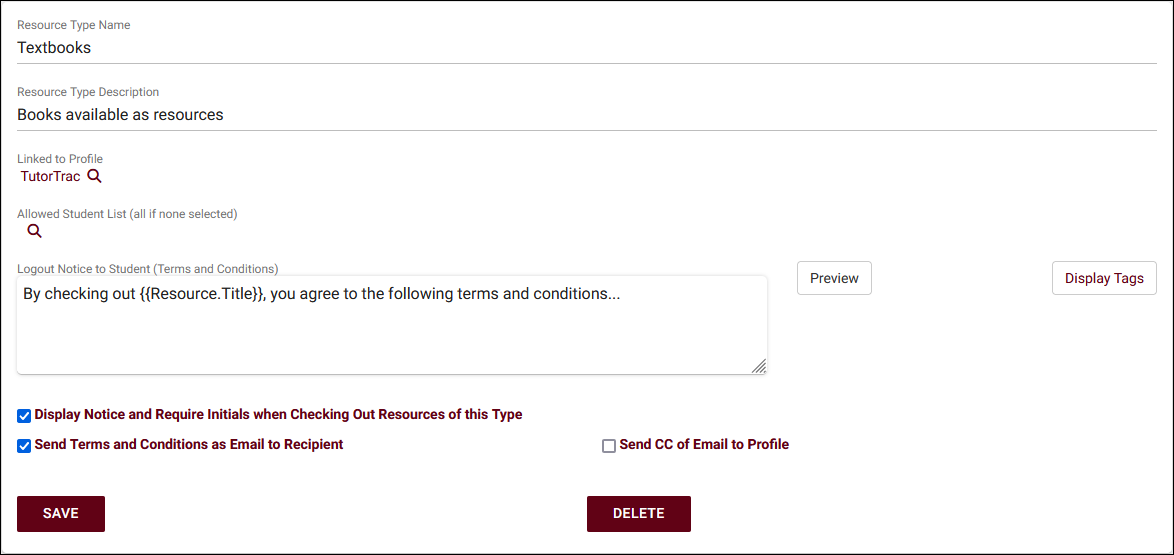
- Resource Type Name
- The type/category for your resources.
- The type/category for your resources.
- Resource Type Description
- Information about this resource type.
- Information about this resource type.
- Linked to Profile
- Allows you to link this Resource Type for use in a specific profile.
- Allows you to link this Resource Type for use in a specific profile.
- Allowed Student List
- Allows you to only allow students on this list to checkout this resource, blocking everyone else. If left blank, anyone can checkout this resource (assuming they aren't blocked from resource usage entirely).
- Allows you to only allow students on this list to checkout this resource, blocking everyone else. If left blank, anyone can checkout this resource (assuming they aren't blocked from resource usage entirely).
- Activate Option to Rescan Barcode on Checkout from Reservation
- If enabled, when a staff member clicks on a reservation to check a resource out they will be prompted to scan the barcode of any resource instead. This effectively allows them to quickly transfer the reservation to the item actually being checked out. The reason you may want to use this is if you have many of the same item that you track reservations for, but it doesn't matter which item is checked out to the student. For example, a student may reserve calculator #123, but the staff member is holding calculator #456, so they'll check that item out to the student instead.
- If enabled, when a staff member clicks on a reservation to check a resource out they will be prompted to scan the barcode of any resource instead. This effectively allows them to quickly transfer the reservation to the item actually being checked out. The reason you may want to use this is if you have many of the same item that you track reservations for, but it doesn't matter which item is checked out to the student. For example, a student may reserve calculator #123, but the staff member is holding calculator #456, so they'll check that item out to the student instead.
- Display Notice and Require Initials when Checking Out Resources of this Type
- If enabled, a prompt will appear during checkout requiring that the user agree to terms and conditions before continuing. Terms can be entered in the Logout Notice to Student field (HTML & Twig supported), and a copy of the terms can be automatically forwarded to the student by checking Send Terms and Conditions as Email to Recipient. This copy of the terms and conditions can also include a file attachment uploaded via the And also attach file option.
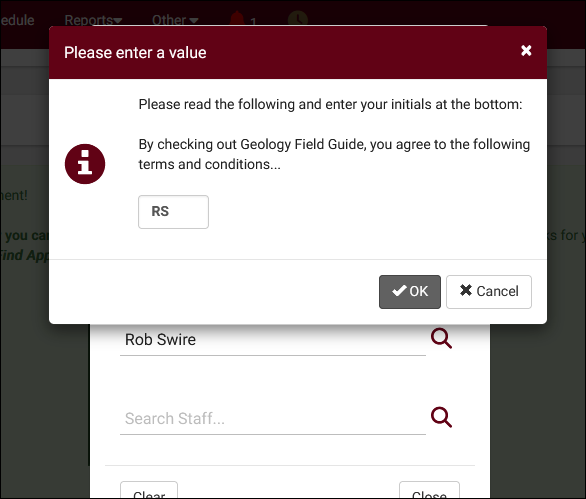
There are a couple settings of note within your permission group(s) relating to Resources.
Other > Other Options > Groups > [Your Group] > Log In/Out

- Allow user to log resources in and out provides users in this group the ability to check resources out to students and staff. Users in this group will only be able to checkout a resource if it is assigned to one of the same profiles as their group, or if the resource is linked to all profiles.
- Allow user to view what resource the student has logged out provides users in this group the ability to view a student's currently logged out item.
Other > Other Options > Groups > [Your Group] > Admin/Modules
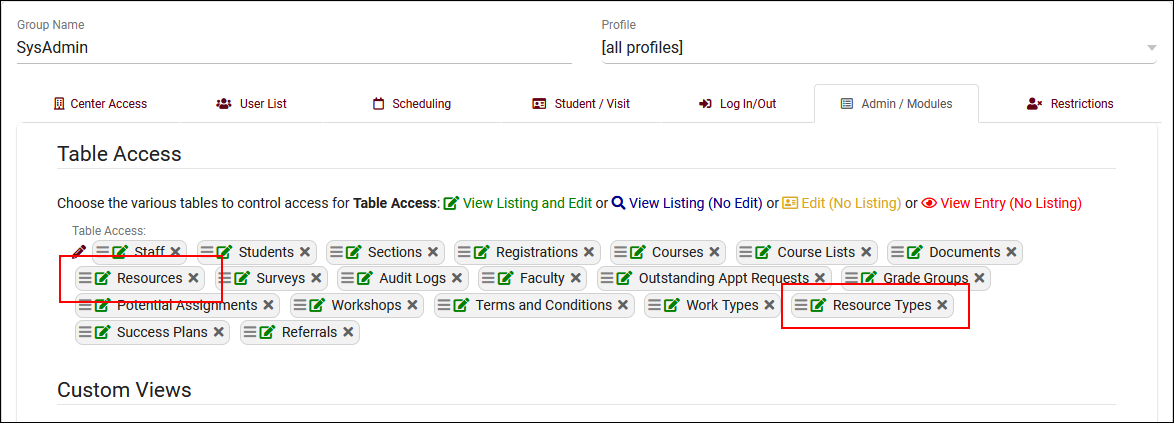
- Table Access provides access to the Other > Resources view of resources. You can also assign Resource Types here to allow this group to view and edit these as well.
After creating your resource and updating your groups, you're ready to start checking out resources. This option can be found by going to Other > Log Resource.
You will then be brought to the following screen with two text entry areas available. The first is where you select a resource (searching by Barcode, Title, or Keywords), the second allows you to select a student or staff member. Once one or both fields are selected, additional options become available to check out, return, or reserve this item. The button can be used to full-screen the resource checkout pop-up, allowing you to leave it open to continuously checkout and return items.
In the event that Collateral Logic is being utilized, more options will be required in regards to collecting/returning the collateral item before and after checkout.
Students can be allowed to reserve resources from their dashboard if configured in global preferences. To enable this functionality, go to Other > Other Options > Preferences > System Preferences > Resource Management.
- Choose to Block Students on List
- Show resources widget on the student dashboard
- Allow students to reserve a resource via the dashboard
- Expands the above functionality to allow students to reserve resources for themselves.
- Expands the above functionality to allow students to reserve resources for themselves.
- Maximum # outstanding reservations overall
- How many total outstanding reservations can a student hold for your resources?
- How many total outstanding reservations can a student hold for your resources?
- Maximum # outstanding reservations for one resource
- How many total outstanding reservations can a student hold for a single resource?
- How many total outstanding reservations can a student hold for a single resource?
- Maximum # of days for an individual reservation
- How many days can a student reserve a resource for? For example, allowing the student to reserve the resource from the 11th of the month to the 17th, but no longer, would mean this preference needs to be set to 7.
- How many days can a student reserve a resource for? For example, allowing the student to reserve the resource from the 11th of the month to the 17th, but no longer, would mean this preference needs to be set to 7.
- Minimum time needed (days hrs:min) prior to reservation
- Choose the minimum amount of time in advance needed in order to reserve a resource. This is to prevent students from reserving items in the very near future.
- Choose the minimum amount of time in advance needed in order to reserve a resource. This is to prevent students from reserving items in the very near future.
Resource emails can be customized to inform students of the due date of their checked-out resource, or if the resource is overdue. These options are part of your profile preferences, in Other > Other Options > Profiles > [Your Profile] > Prefs > Emails > Resource Checkout Emails.
Similar to your other Profile Emails, you can write a subject line and body of your email, an additional SMS text, and choose when this email is sent.
- Send Overdue Emails
- Disable this email, or choose what time it should be sent. This email will send if a student has an overdue checkout.
- Student resource overdue email subject
- The subject line of the email, supports Twig Tags just like the body of the email.
- Resource overdue email
- The body of the email to be sent to Students.
- Resource overdue SMS Msg
- A separate message sent to the Student's phone. Requires TextAlerts Module.
- CC the Profile on Resource overdue emails
- This option will send a copy of this email to your Profile email address if available.
- Send additional overdue emails daily
- Resend the above email on a daily basis until the item is returned.
- Student resource confirmed subject
- This email is sent immediately upon resource checkout. This option affects the subject line of the email, which supports Twig tags just like the body of the email.
- Resource confirm email
- The body of the email to be sent to Students.
- Resource confirm SMS Msg
- A separate message sent to the student's phone. Requires TextAlerts Module.
- CC the Profile on confirmation emails
- This option will send a copy of this email to your Profile email address if available.
- This option will send a copy of this email to your Profile email address if available.
- Send Resource Reminder Emails (Pickup and Return)
- Choose when reservation and overdue reminders are sent. The reservation email will notify the student that an item they reserved is available for pickup based on the first day of their reservation. The return reminder will send prior to the item becoming overdue.
- Student resource pickup/return reminder email subject
- The subject line of the email, supports Twig tags just like the body of the email.
- Resource pickup/return reminder email
- The body of the email to be sent to Students.
- Resource pickup/return reminder SMS Msg
- A separate message sent to the Student's phone. Requires TextAlerts Module.
- A separate message sent to the Student's phone. Requires TextAlerts Module.
- Resource Return Confirmation
- This email allows you to send an email to the user confirming that they have returned the resource.
- Student resource return confirmation email subject
- The subject line of the email, supports Twig tags just like the body of the email.
- Resource return confirmation email
- The body of the email to be sent to the user.
- Resource return confirmation SMS Msg
- A separate message sent to the user's phone. Requires TextAlerts Module.
- CC the Profile on resource return confirmation emails
- This option will send a copy of this email to your Profile email address if available.
- This option will send a copy of this email to your Profile email address if available.
There are two resource reports available in TracCloud. These can be found by going to Reports > Management > Resources. Resources provides information on resource utilization, while Resources Listing provides information on the items themselves.
This report exports resource usage, showing the students who have checked out a particular resource, the checkout date and time, as well as total hours. This can either be run on overall Utilization, or specifically on Past Due resources.
- Time Frame
- The date range for the data in this report. Beyond entering a date range manually, you can also choose a preset date range (Today, This Month, This Semester, etc) from the dropdown list above.
- Show Inactive Resources
- Include resources in results that have a status of 'Inactive.'
- Show Summary
- Only show data totals, excluding details of individual records.
- For Past Due, Show All Checkouts
- If this is checked, currently checked out resources will be included in report results. Unchecked would exclude these.
- Include Checkout Notes
- Adds the checkout notes field as an additional column in report results.
- Show Totals Bar Chart
- Adds a visual bar chart of totals to your report data.
- Include Email in Utilization
- Include the email address of the user who checked out the item.
- Group by
- Group records by the selected field. Some reports allow you to add secondary and tertiary groupings as well.
- Student ID, Resource Type, Resource Title, Barcode, Keywords, Profile
- Search by Student ID, Resource Type, Resource Title, Resource Barcode, Keywords, or the Profile of your resources.
- Output format
- Use HTML to view report data in your browser, or export this report to a CSV file (available for most reports). Some reports offer additional CSV options depending on if you want to include totals and/or data grouping in your export.
- Deliver to
- Display this report immediately in your browser ("Screen"), or send the report to a specified email address ("Email"). Multiple email addresses can be specified, use ; to separate them (example@example.edu;sample@example.edu).
- View Utilization or View Past Due
- Utilization will show all checked out resources and the individual checkouts. Past Due will only display overdue checkouts, items that were not returned soon enough, filtering out checkouts that were returned in time.
The Resources Listing report will show you a list of resource records along with information about the item and how many times it's been checked out. Data can be grouped by Resource Type if set in the Sort by field.
- Sort by
- Choose how the selected data is sorted.
- Show Inactive Resources
- Include resources in results that have a status of 'Inactive.'
- Show Current and Future Reservations
- Include current and upcoming reservations in report results.
- Resource Type, Resource Title, Barcode, Keywords, Profile
- Search by Resource Type, Resource Title, Resource Barcode, Keywords, or the Pofile of your resources.
- Additional Search
- Filter your results by a selected field.
Use * as a wildcard (Subject: MAT*)
| as "or" (Major: Mathematics|Biology)
# as "Not" (Status: #Inactive)
&& as "And" (Major: #Mathematics&&#Biology)
blankornull as a keyword to find records where the field is blank (Reason: blankornull)
Multiple fields can be added to further narrow down your results.
- Filter your results by a selected field.
- Output format
- Use HTML to view report data in your browser, or export this report to a CSV file (available for most reports). Some reports offer additional CSV options depending on if you want to include totals and/or data grouping in your export.
- Deliver to
- Display this report immediately in your browser ("Screen"), or send the report to a specified email address ("Email"). Multiple email addresses can be specified, use ; to separate them (example@example.edu;sample@example.edu).
- Choose to Block Students on List
- Show resources widget on the student dashboard
- Allow students to reserve a resource via the dashboard
- Expands the above functionality to allow students to reserve resources for themselves.
- Expands the above functionality to allow students to reserve resources for themselves.
- Maximum # outstanding reservations overall
- How many total outstanding reservations can a student hold for your resources?
- How many total outstanding reservations can a student hold for your resources?
- Maximum # outstanding reservations for one resource
- How many total outstanding reservations can a student hold for a single resource?
- How many total outstanding reservations can a student hold for a single resource?
- Maximum # of days for an individual reservation
- How many days can a student reserve a resource for? For example, allowing the student to reserve the resource from the 11th of the month to the 17th, but no longer, would mean this preference needs to be set to 7.
- How many days can a student reserve a resource for? For example, allowing the student to reserve the resource from the 11th of the month to the 17th, but no longer, would mean this preference needs to be set to 7.
- Minimum time needed (days hrs:min) prior to reservation
- Choose the minimum amount of time in advance needed in order to reserve a resource. This is to prevent students from reserving items in the very near future.
- Choose the minimum amount of time in advance needed in order to reserve a resource. This is to prevent students from reserving items in the very near future.


